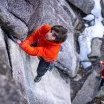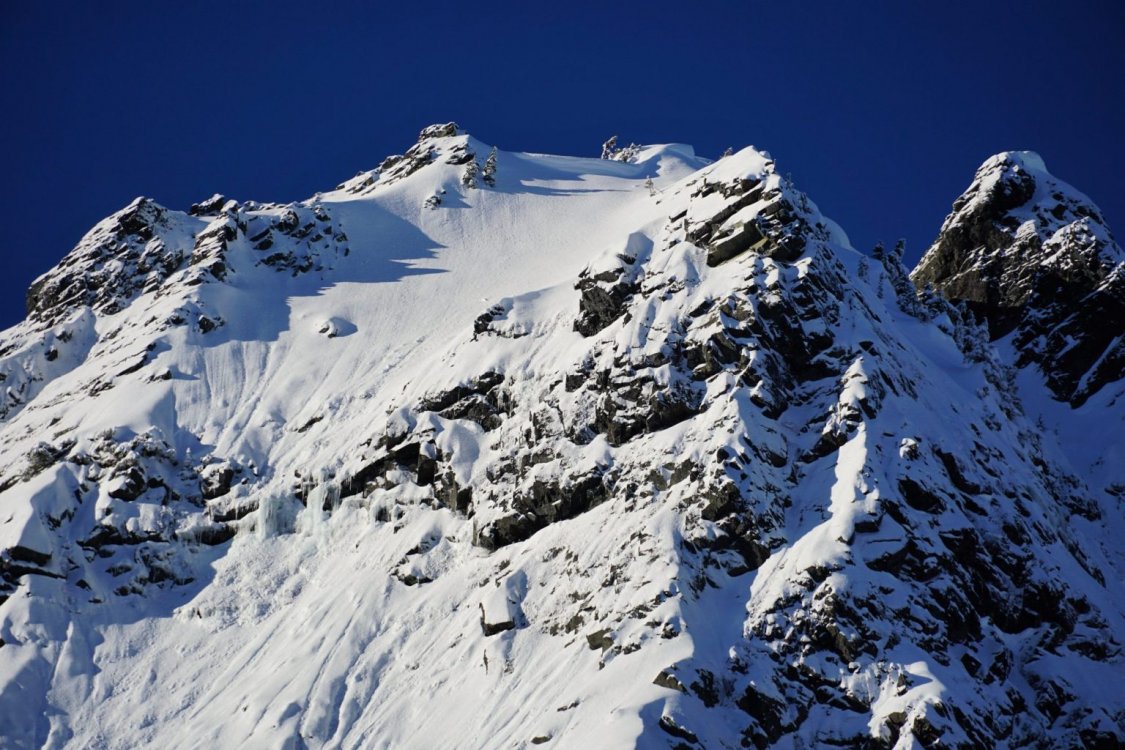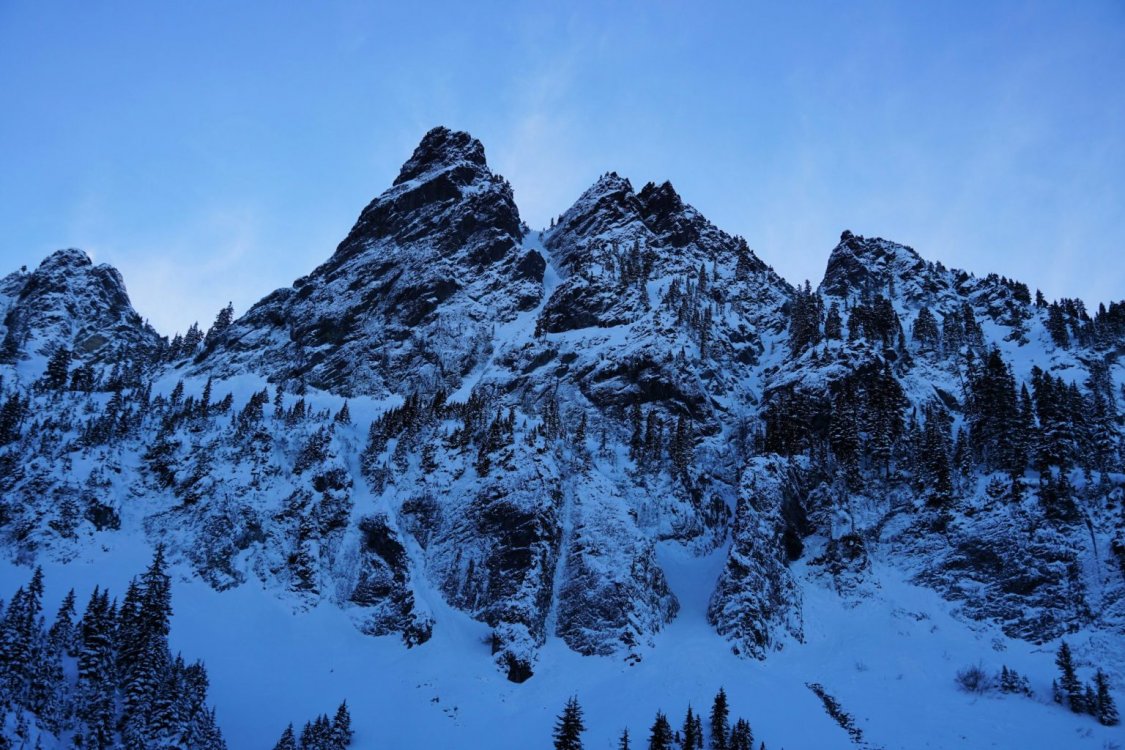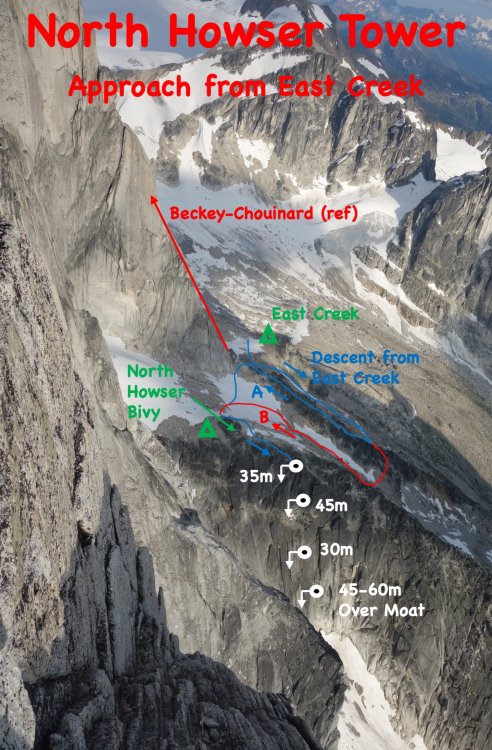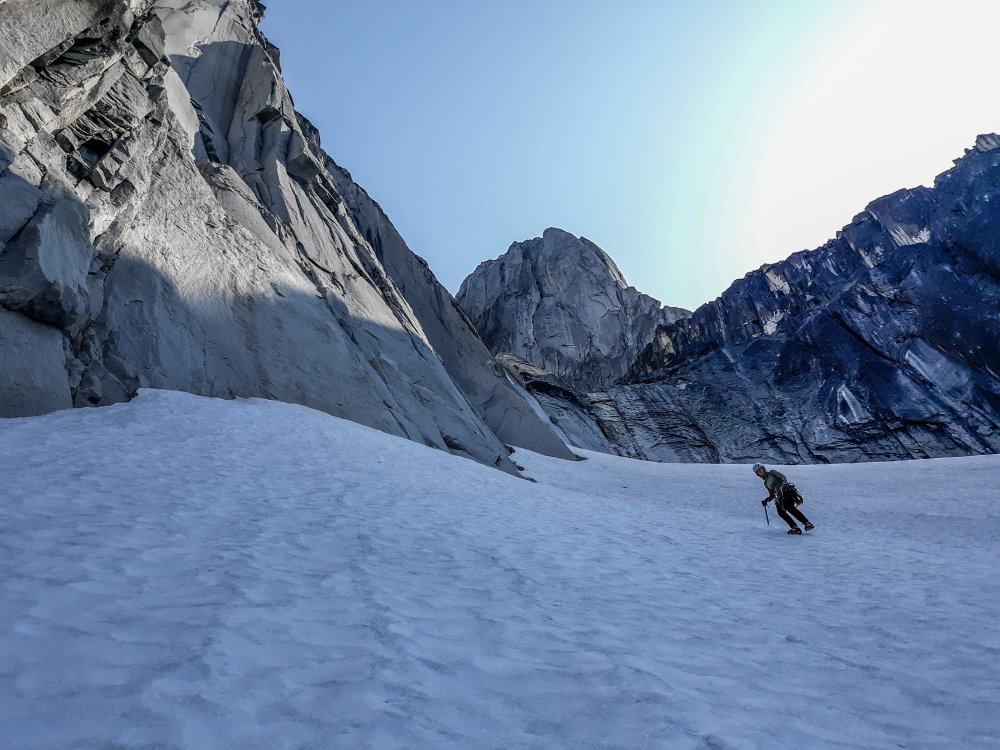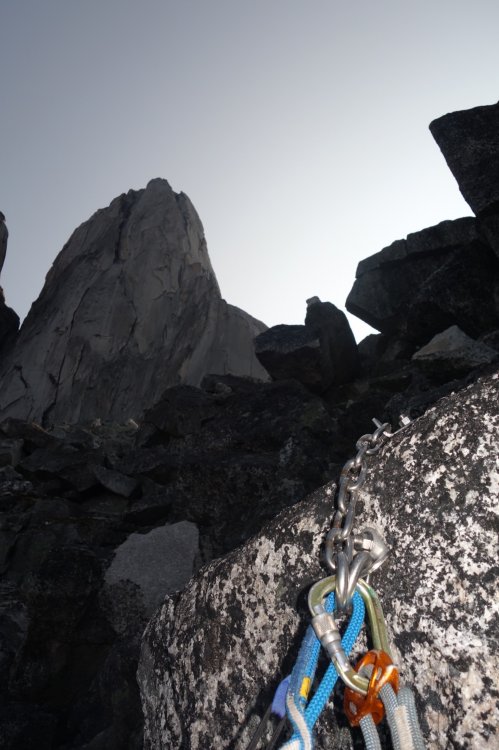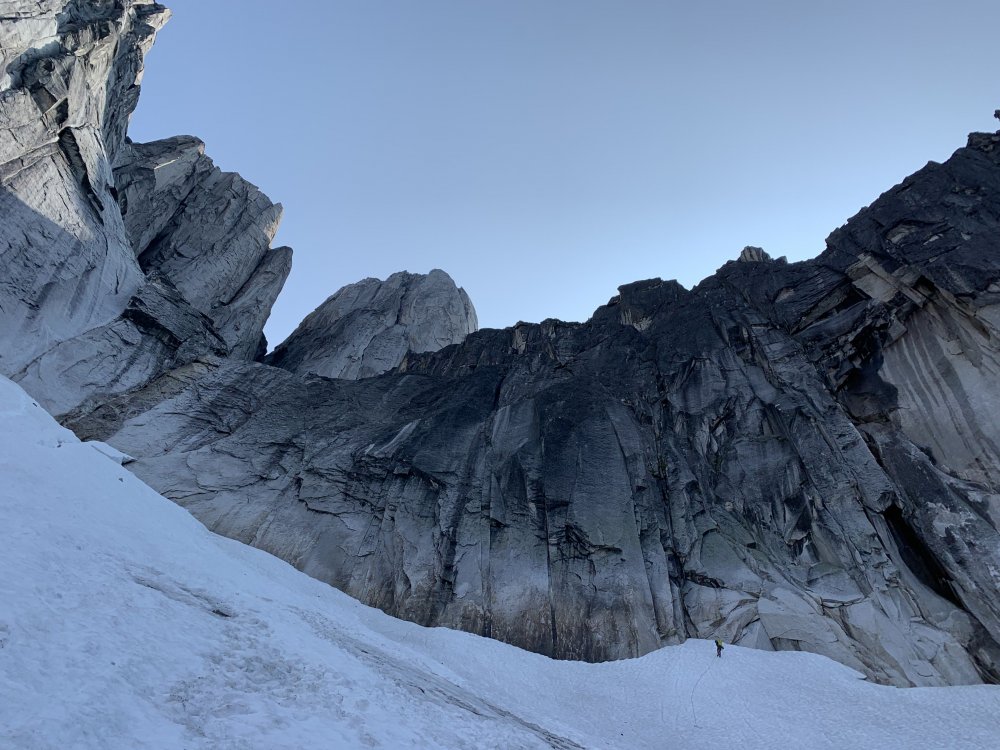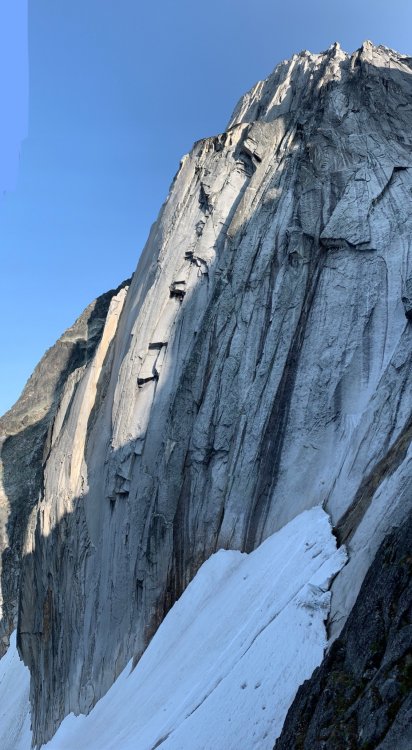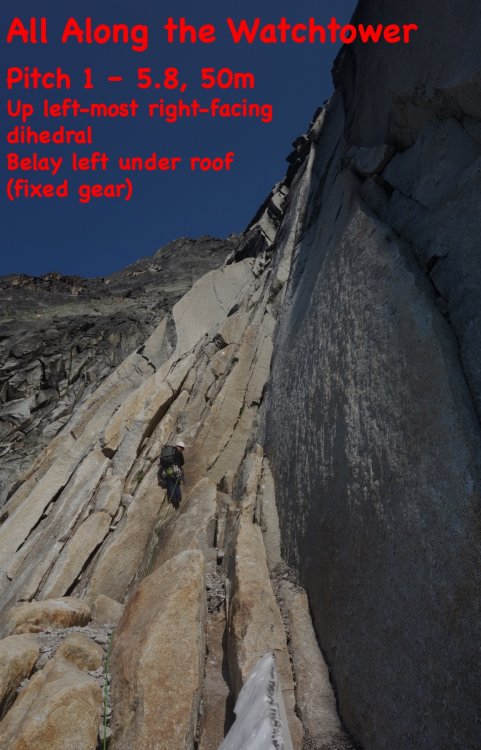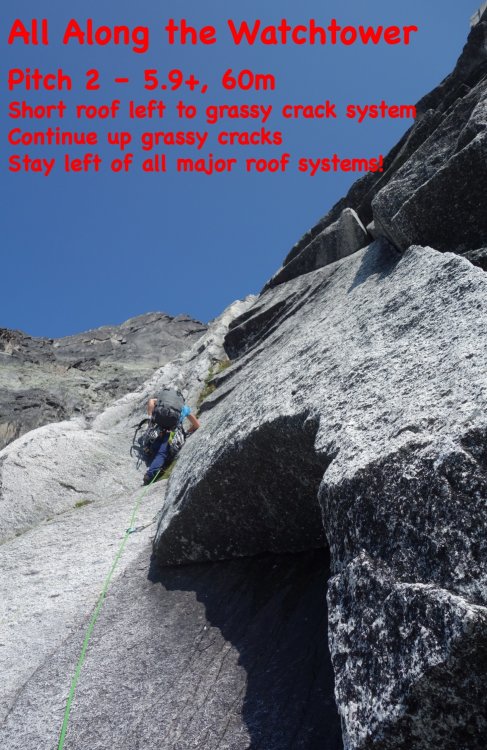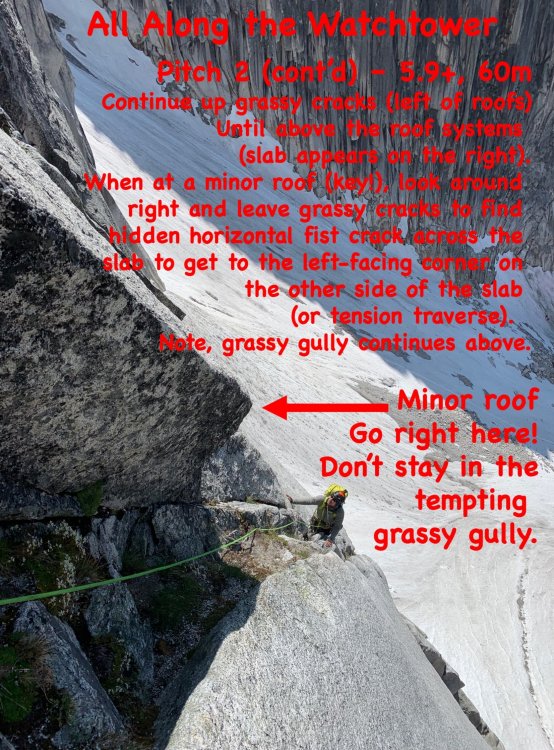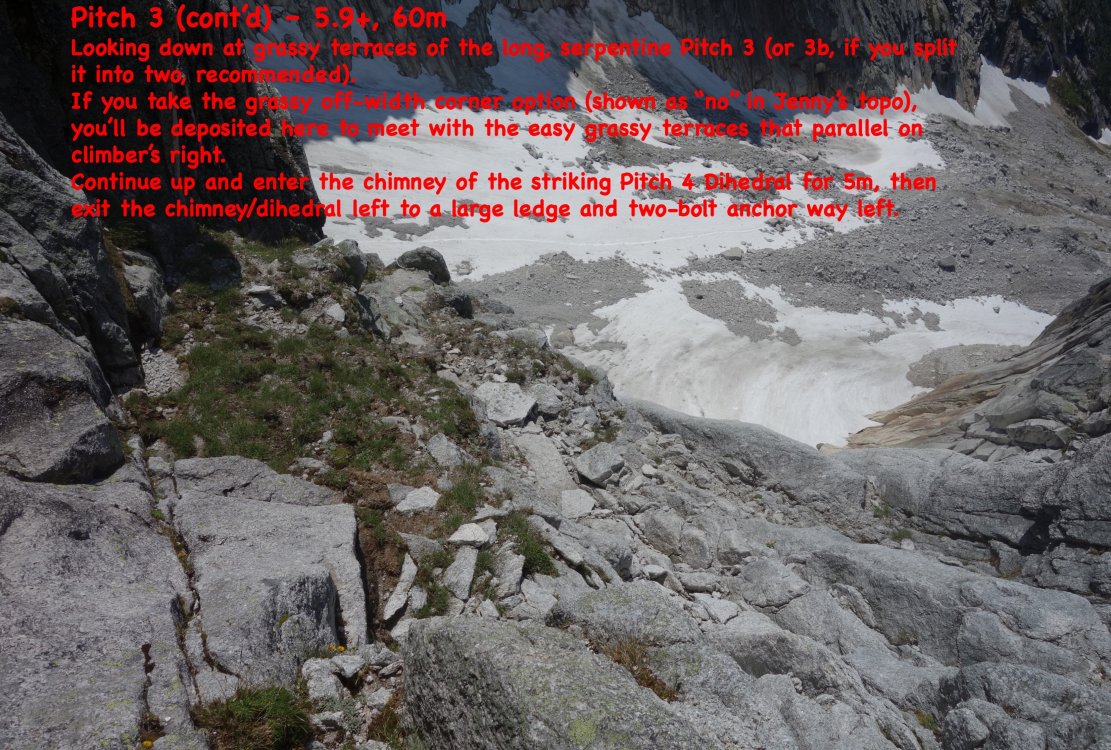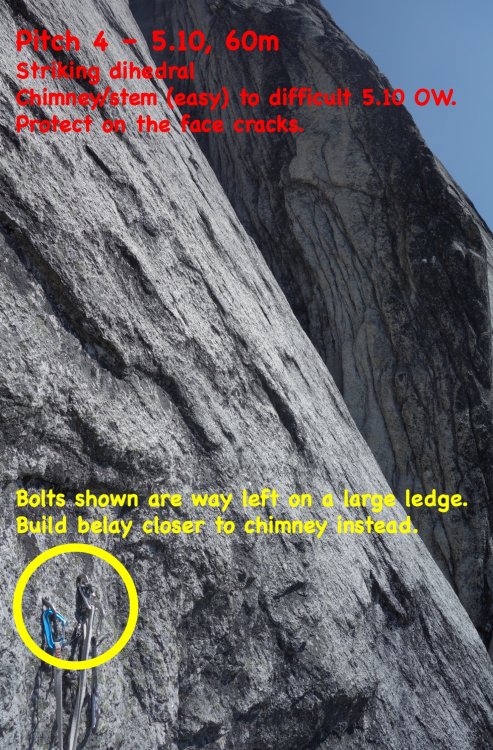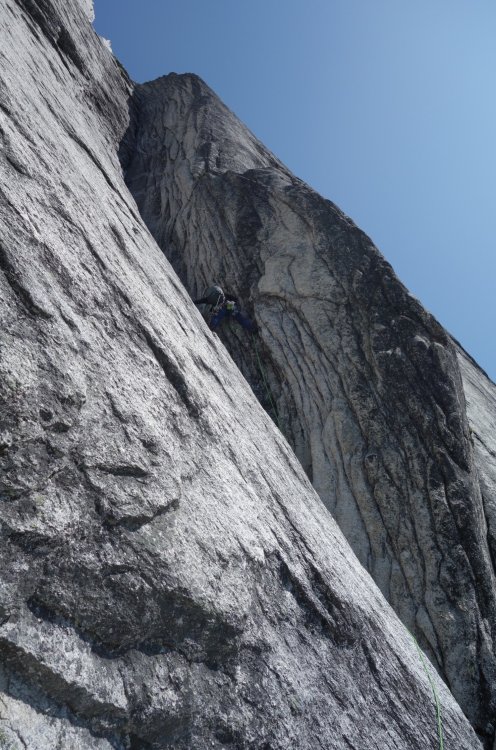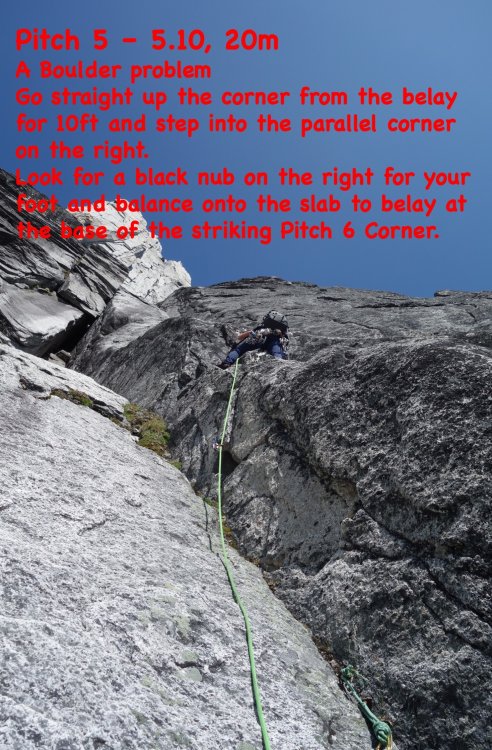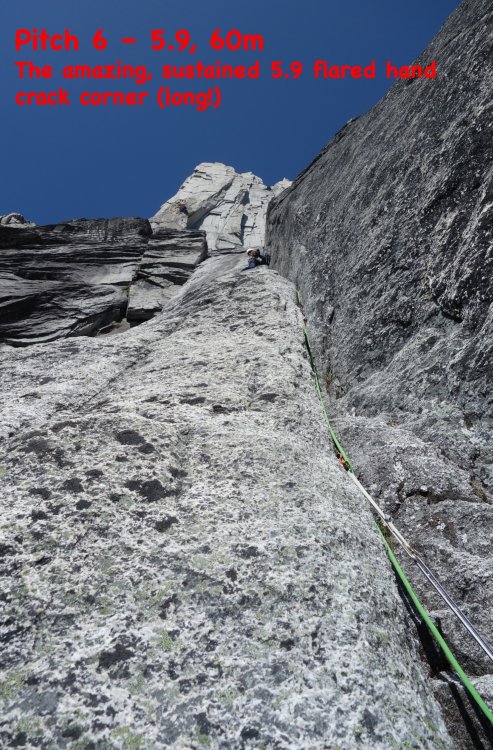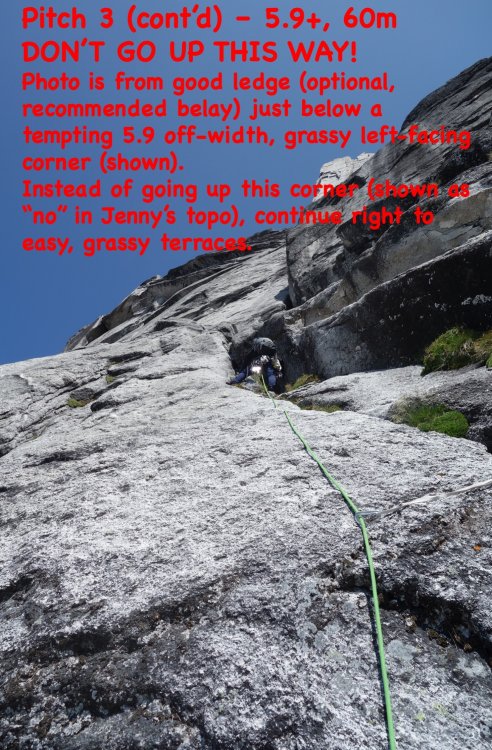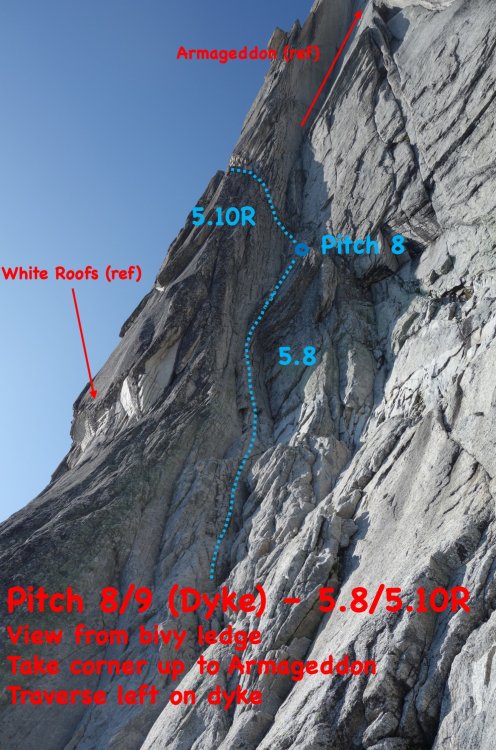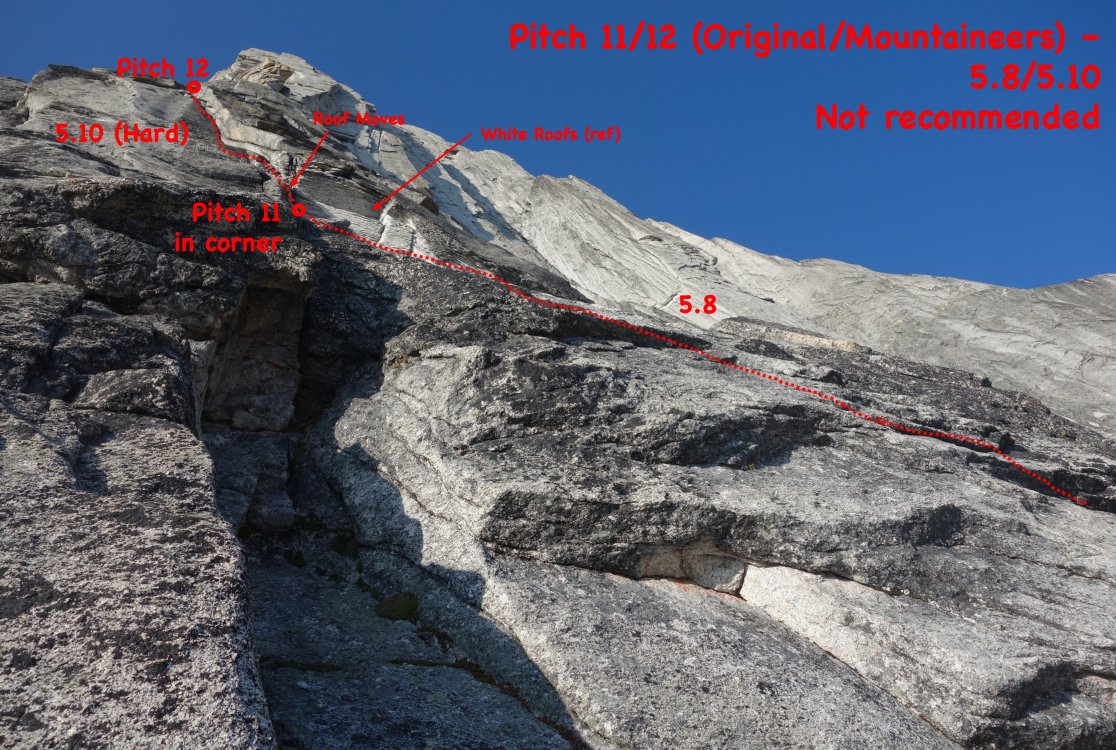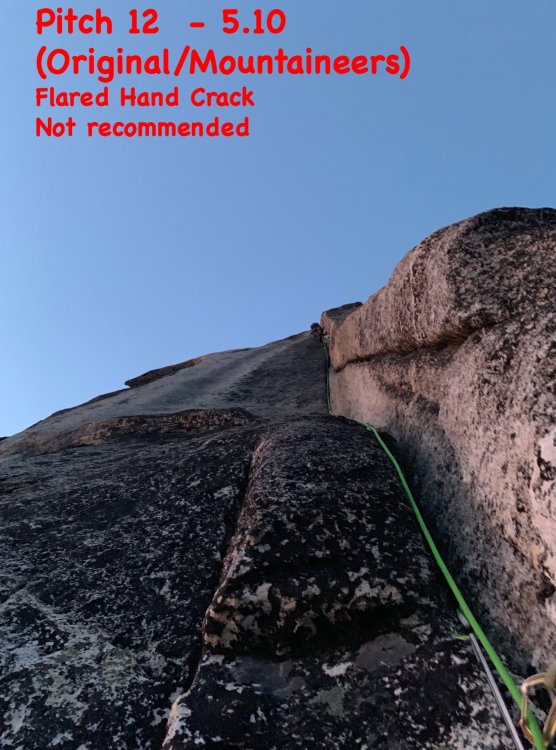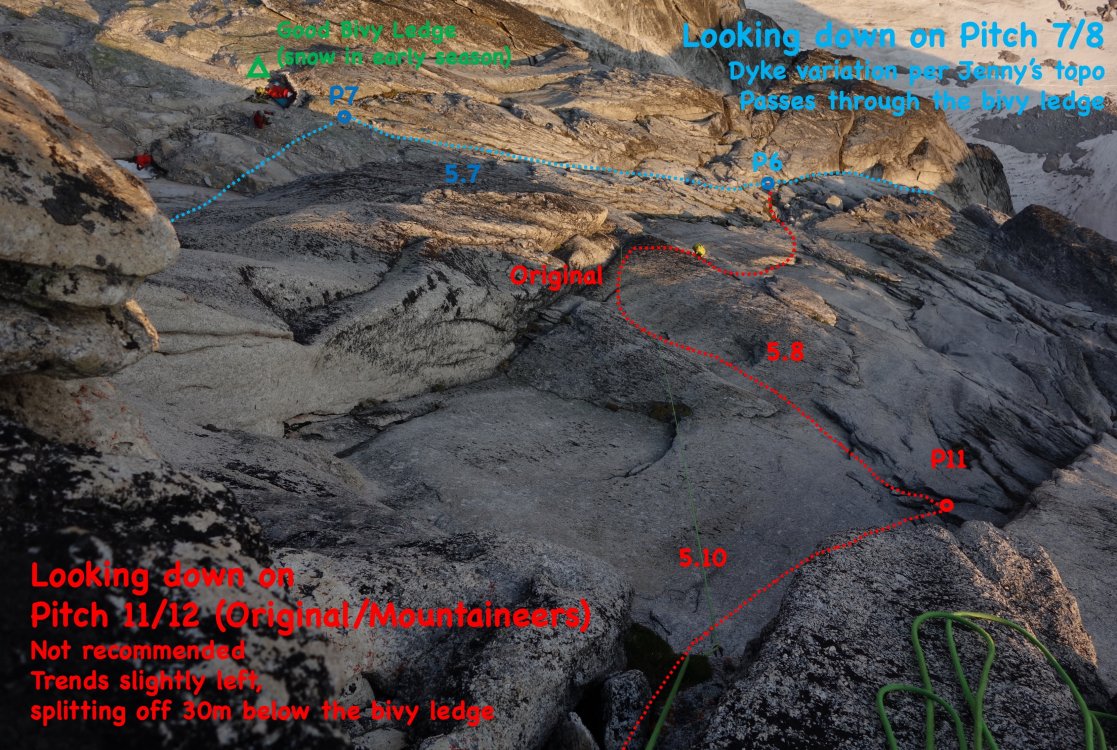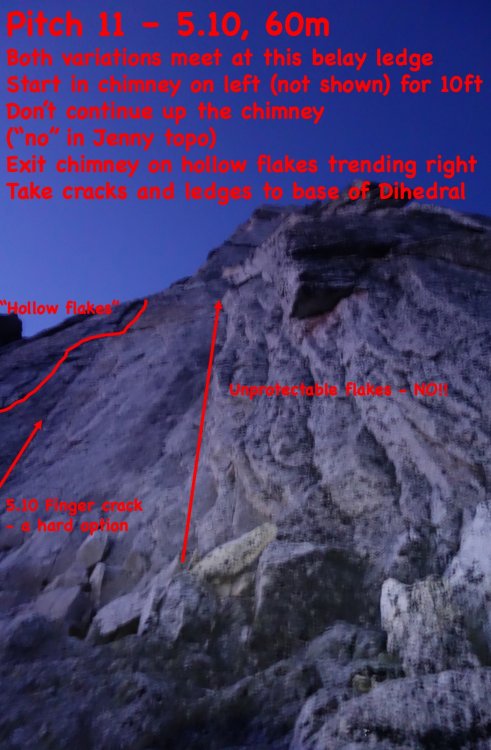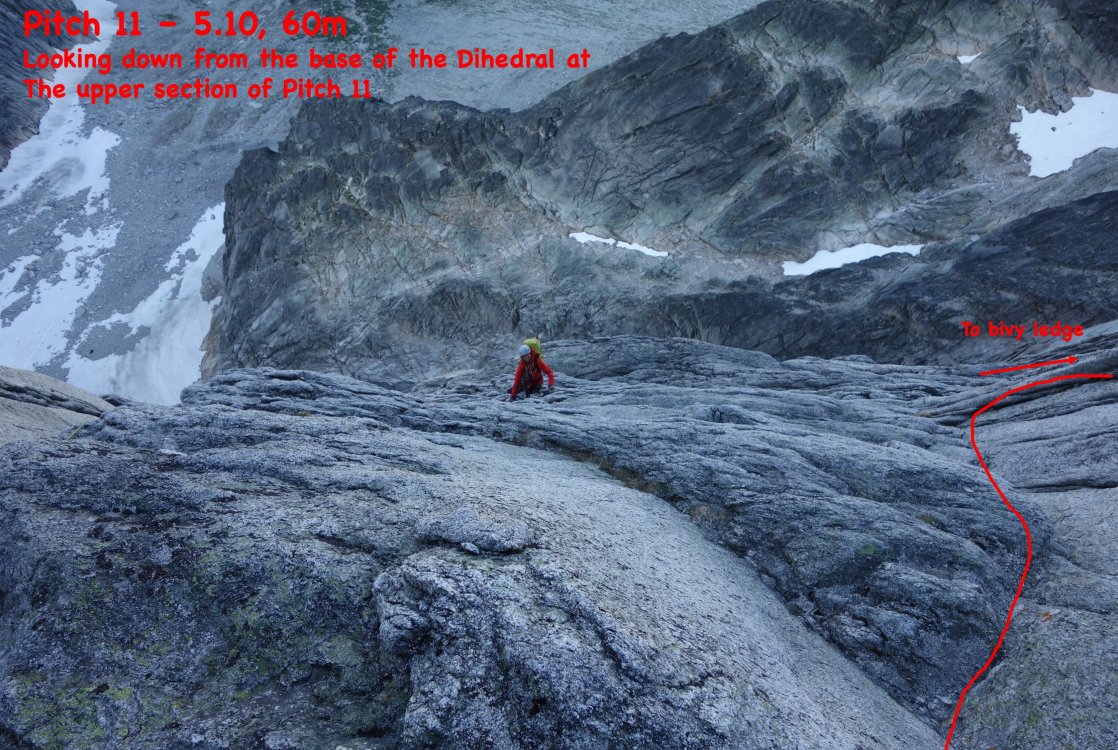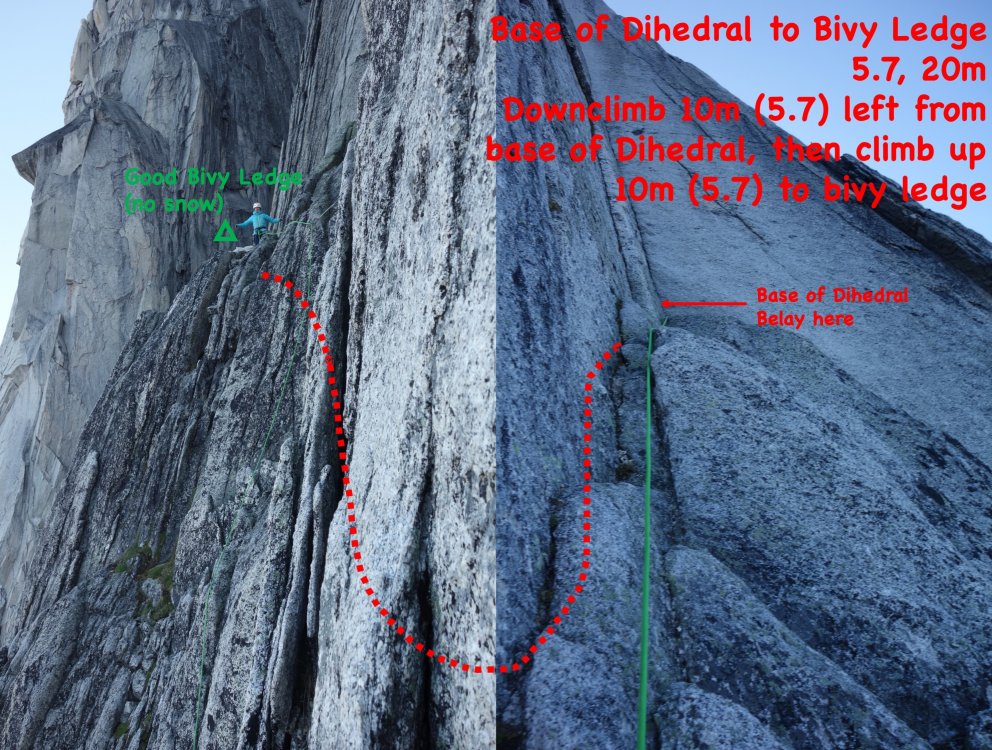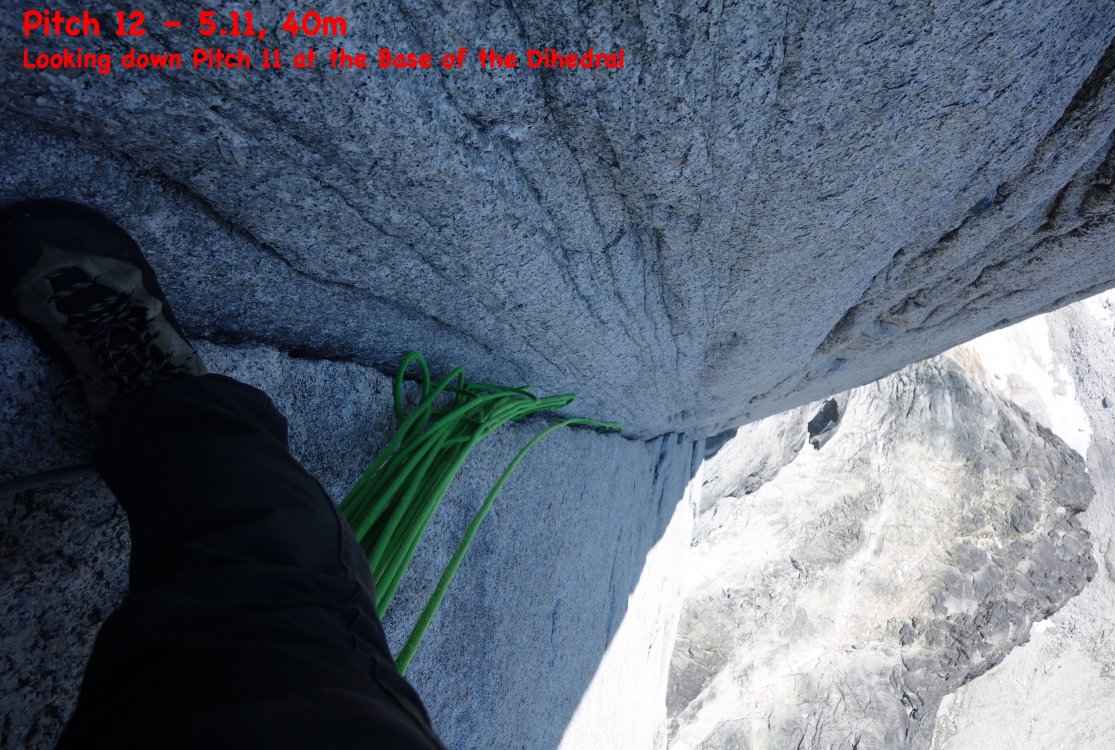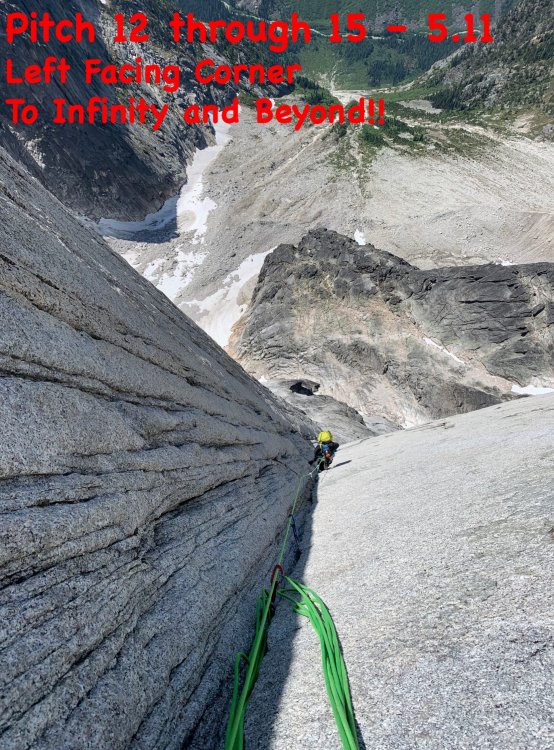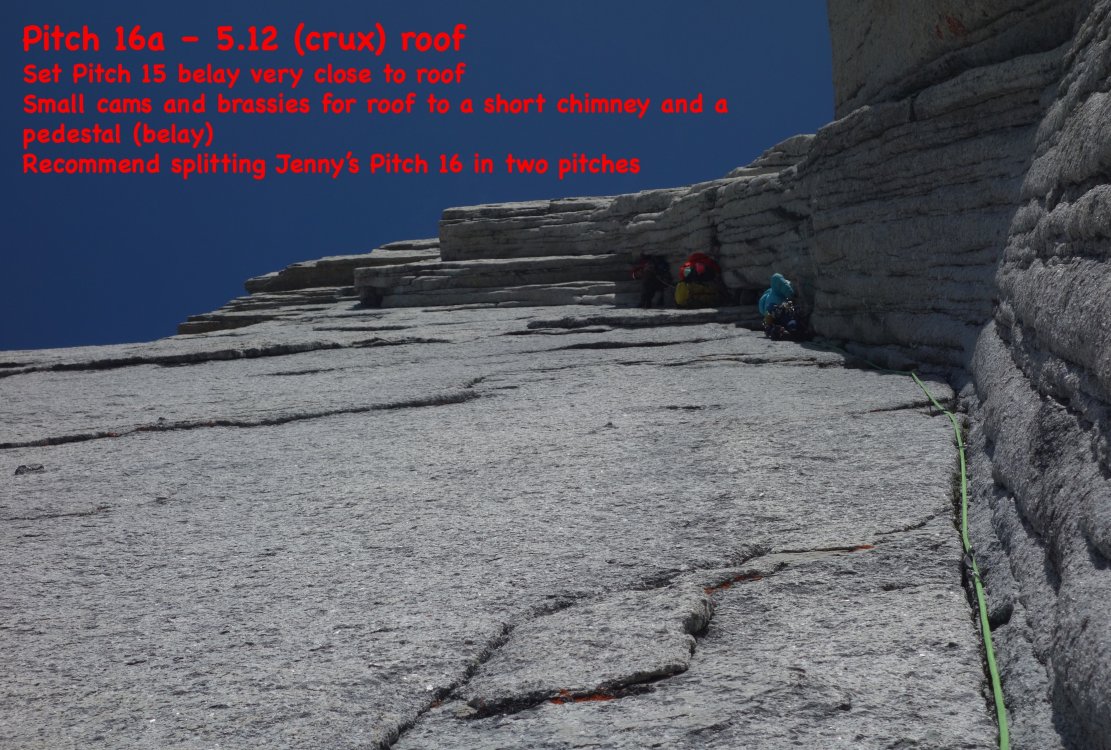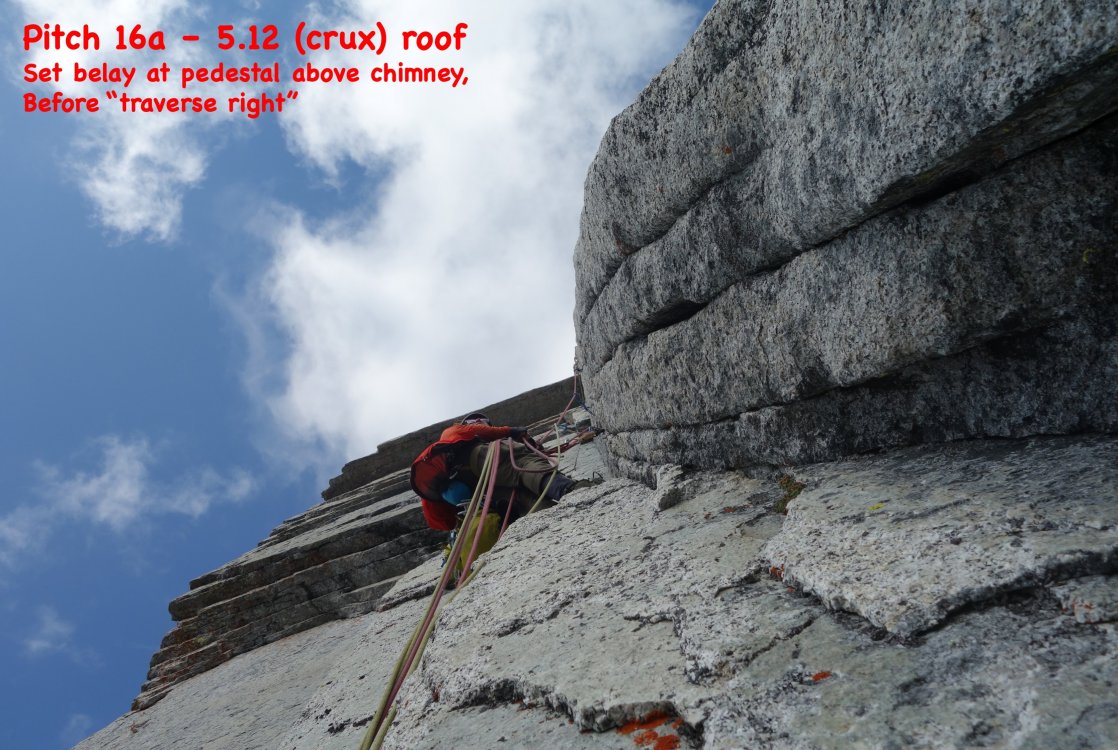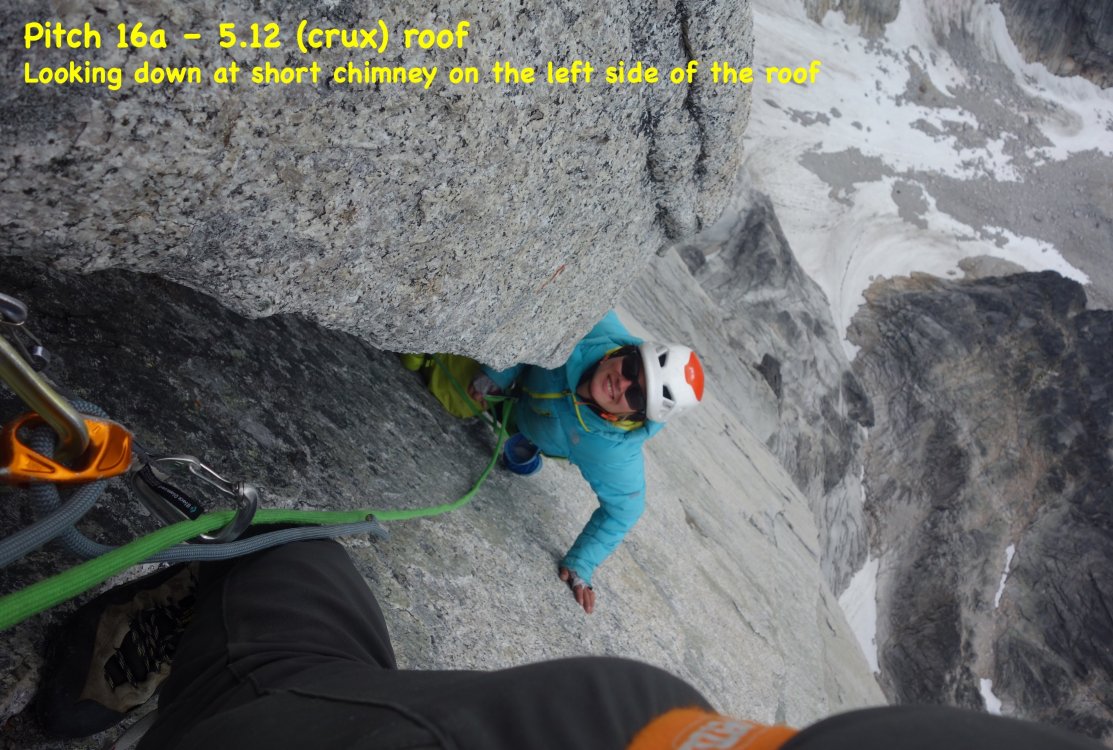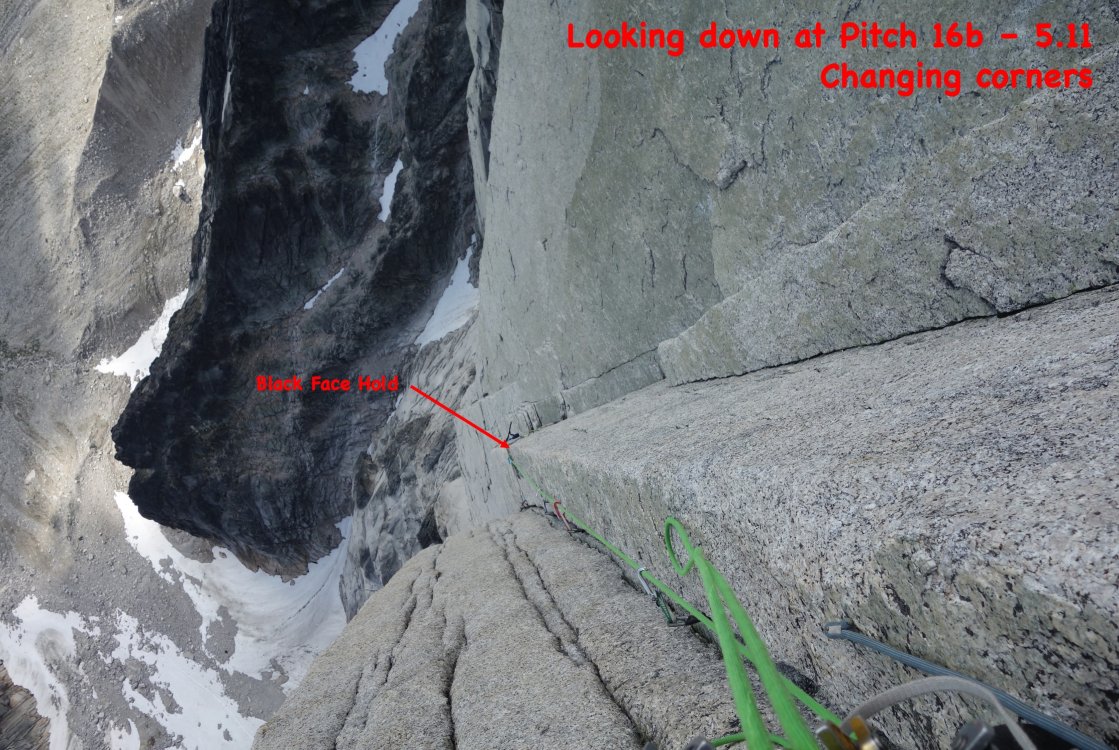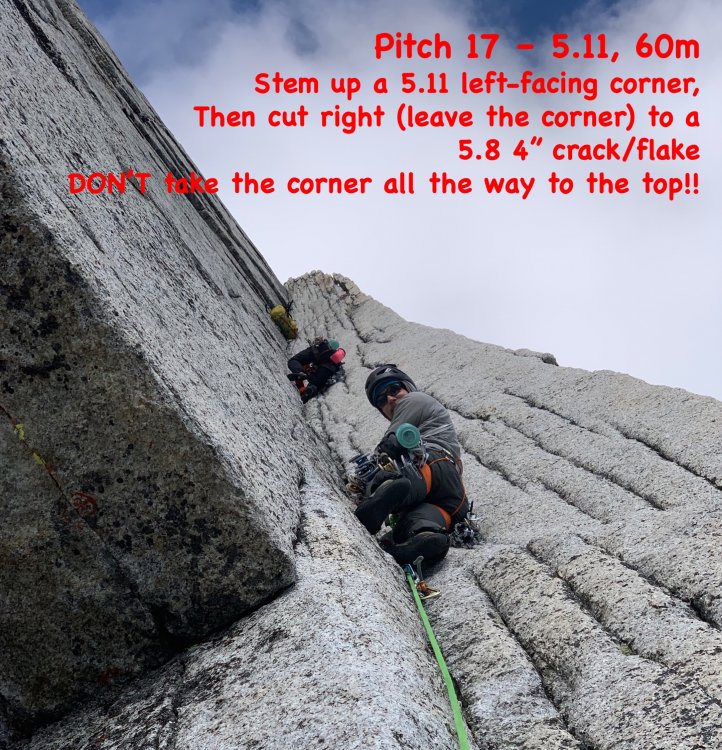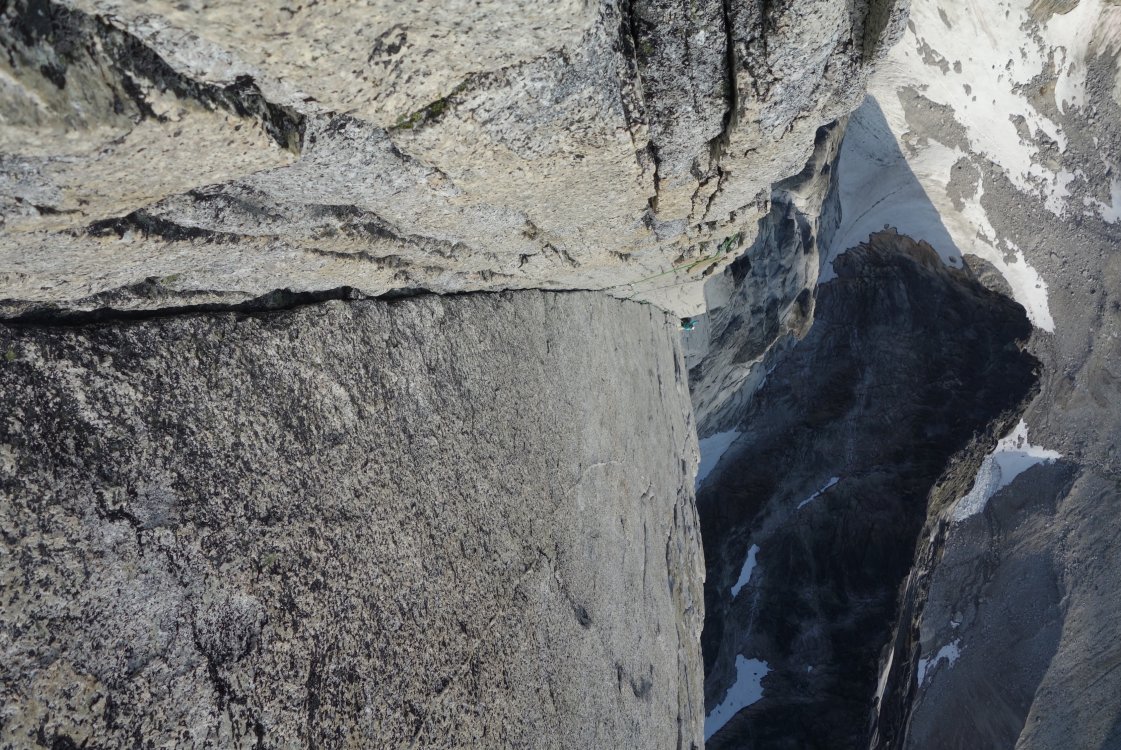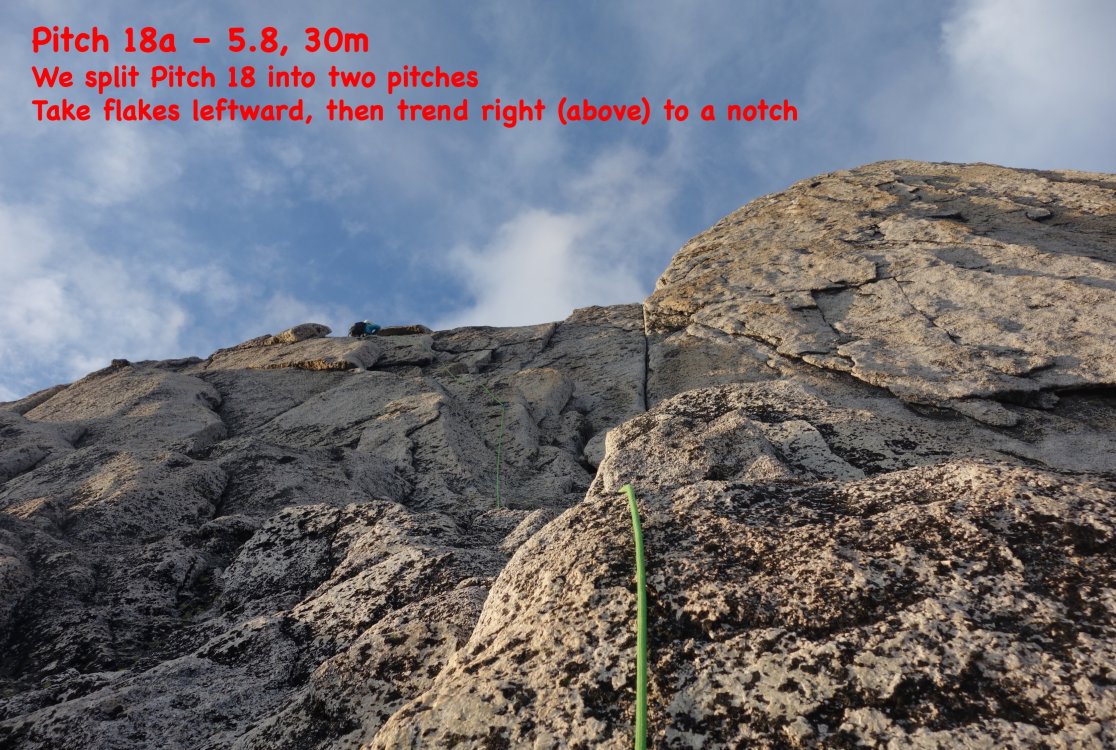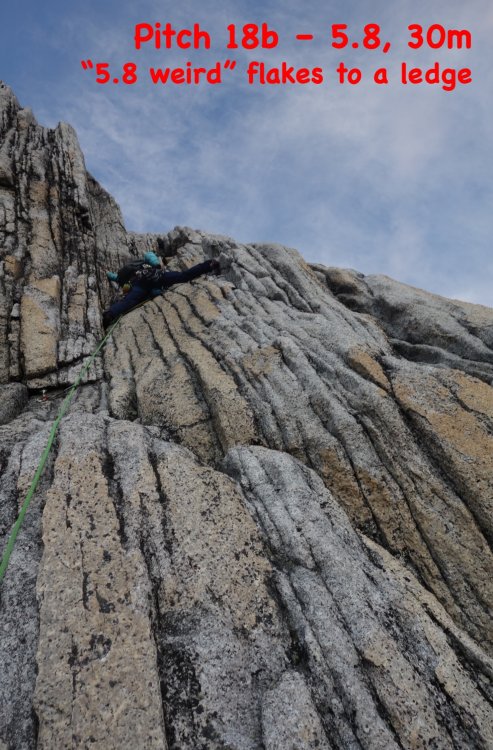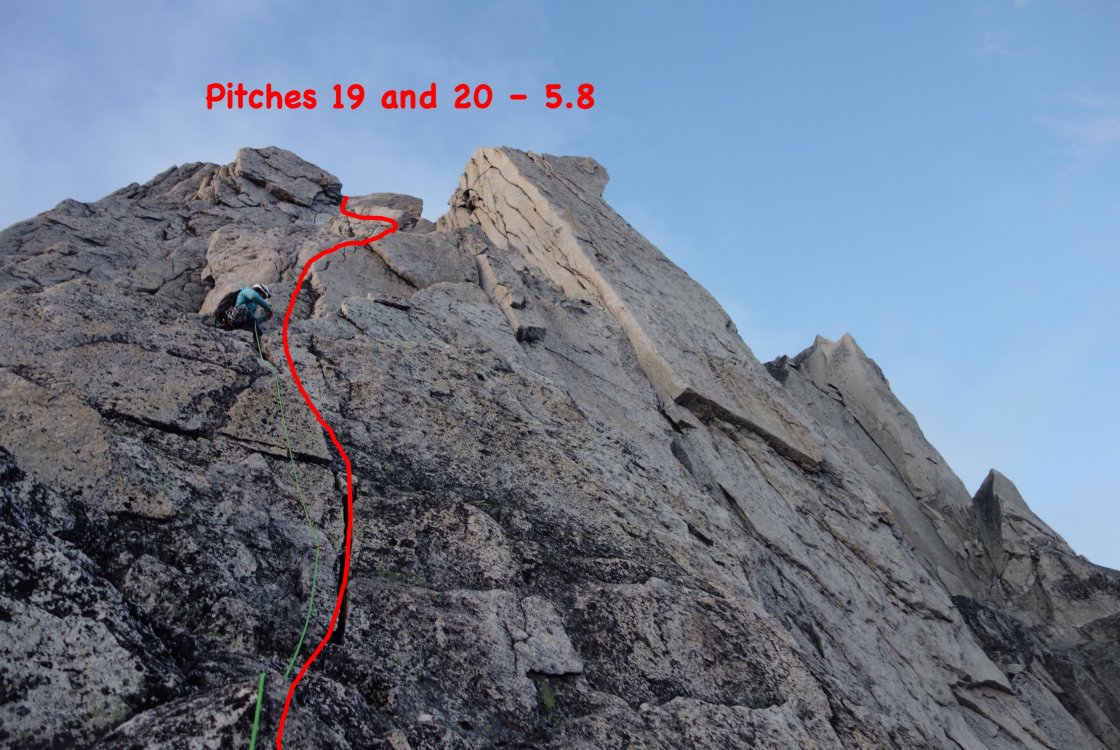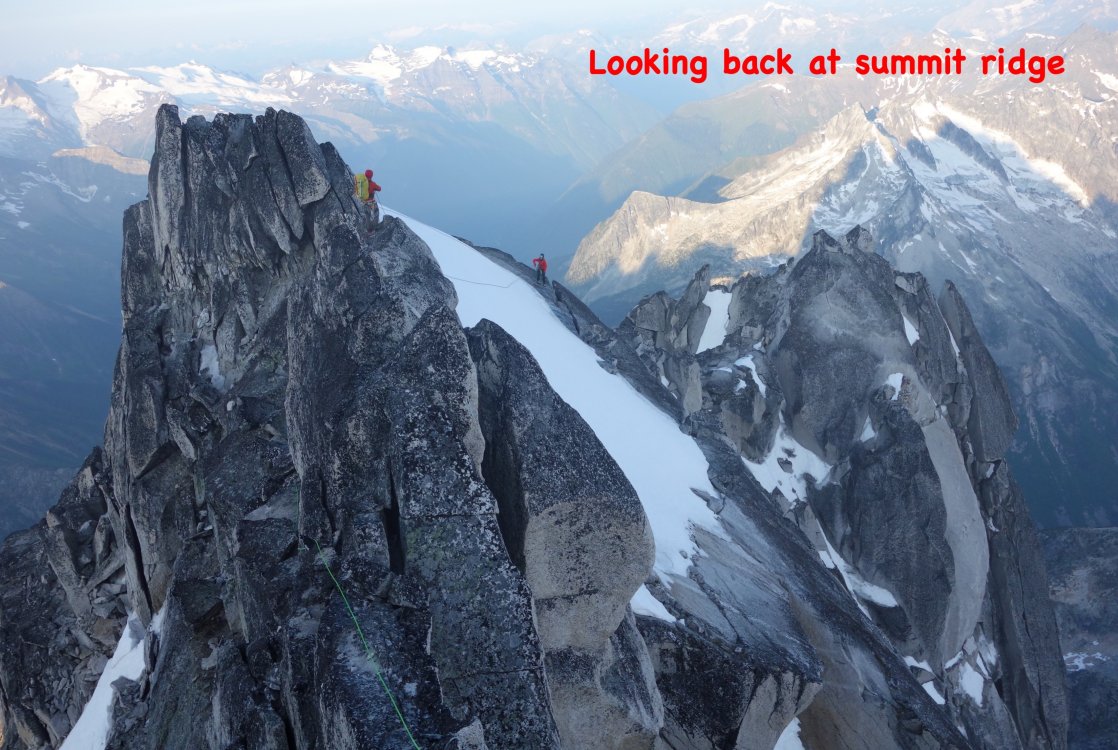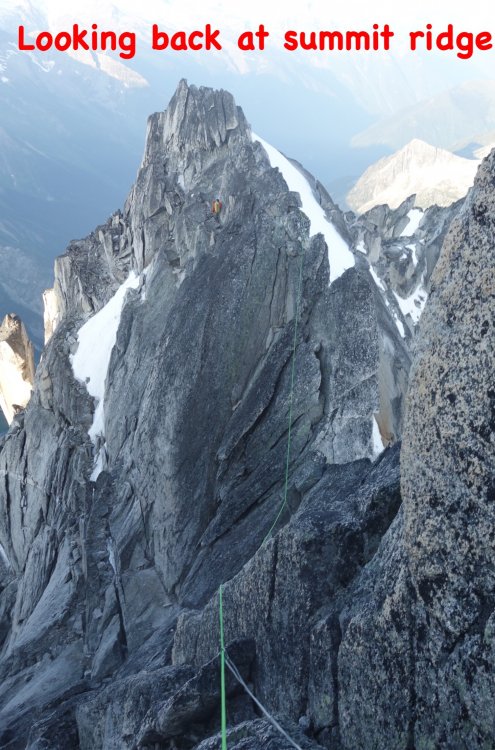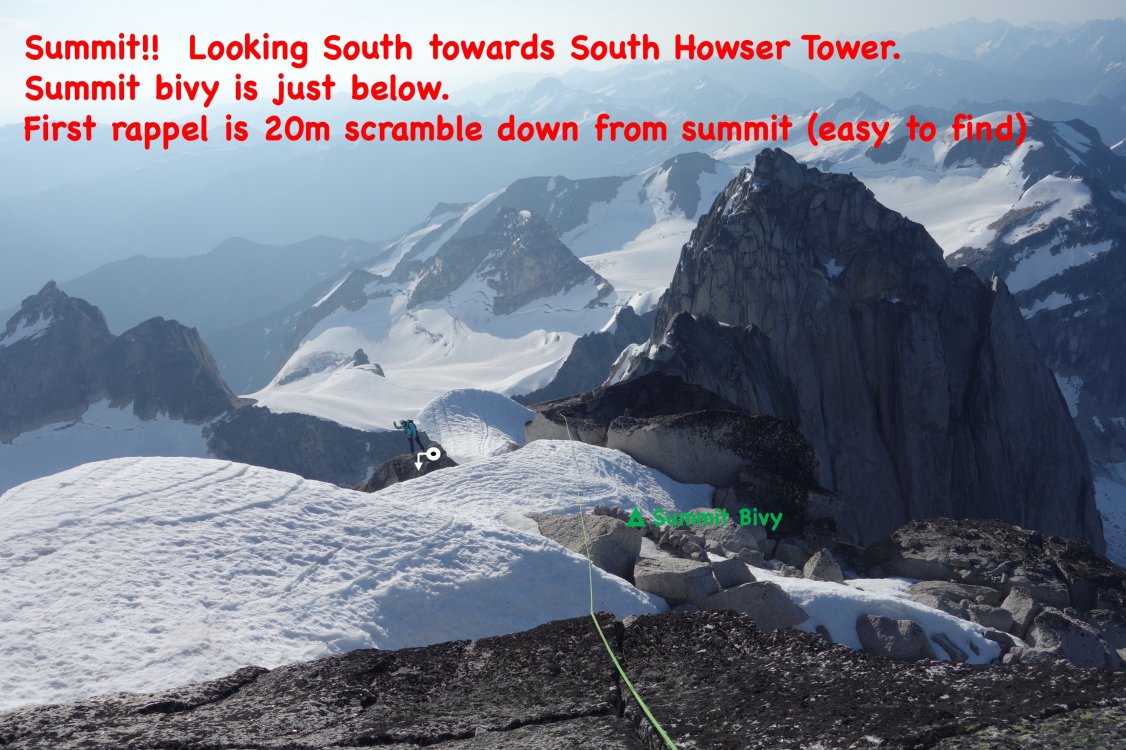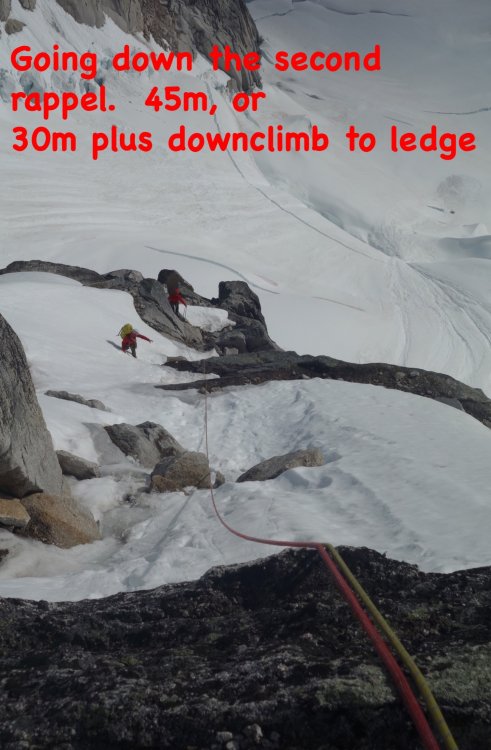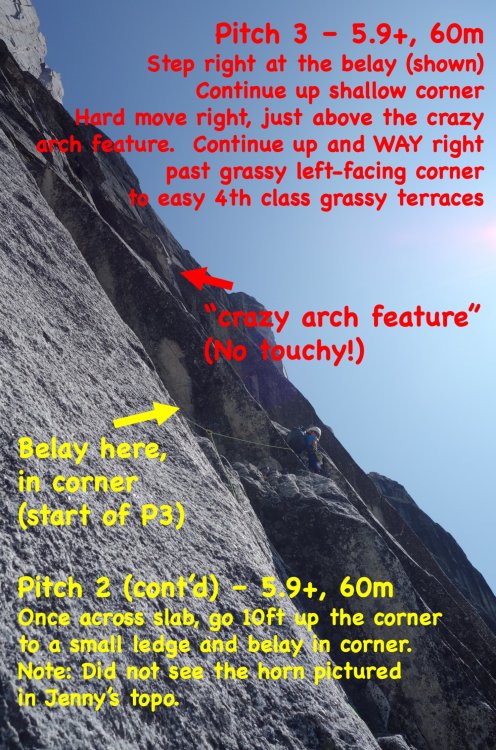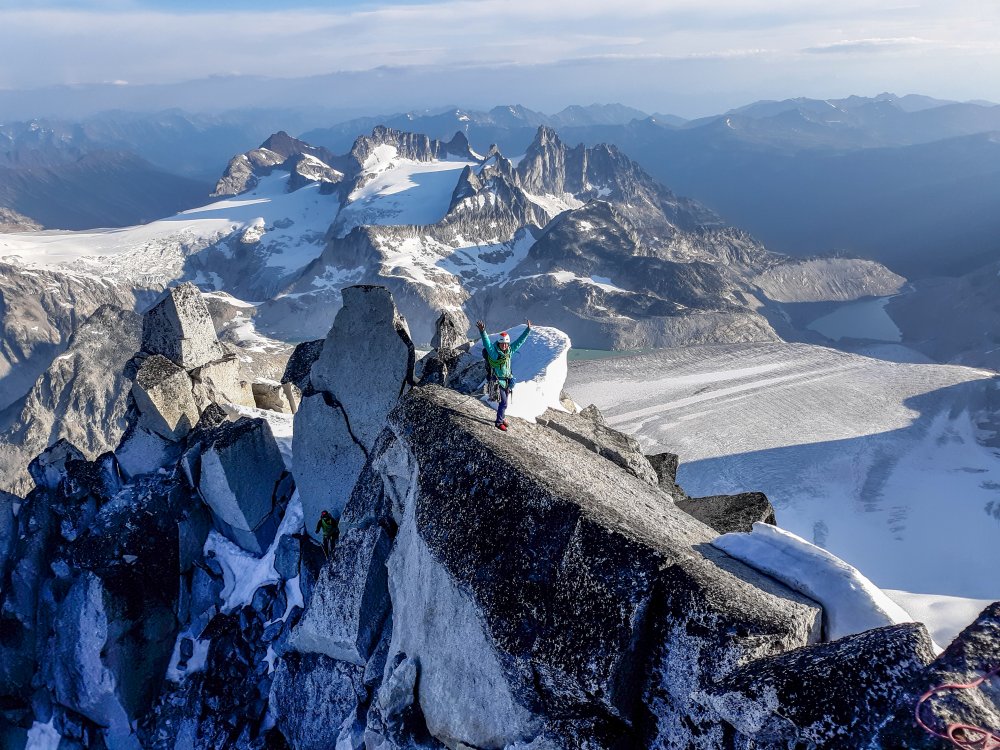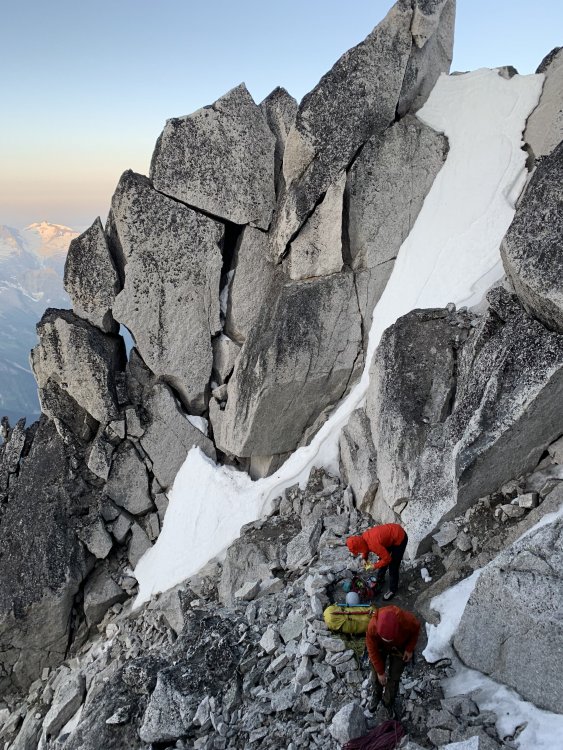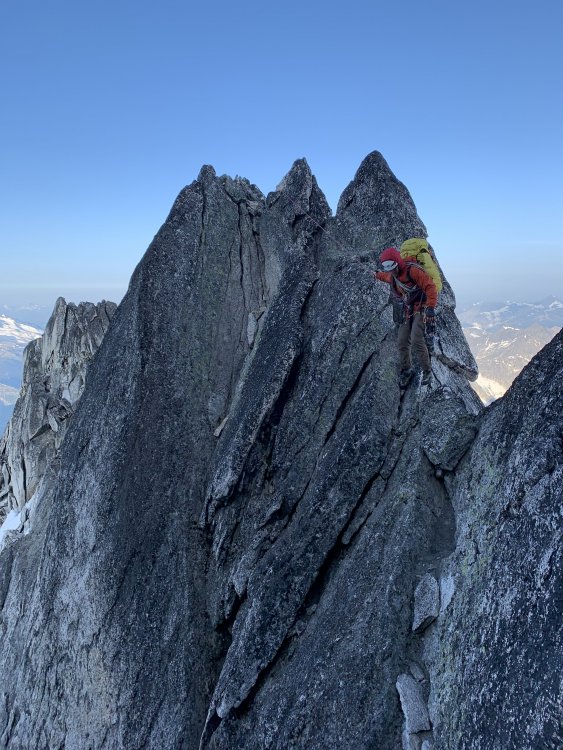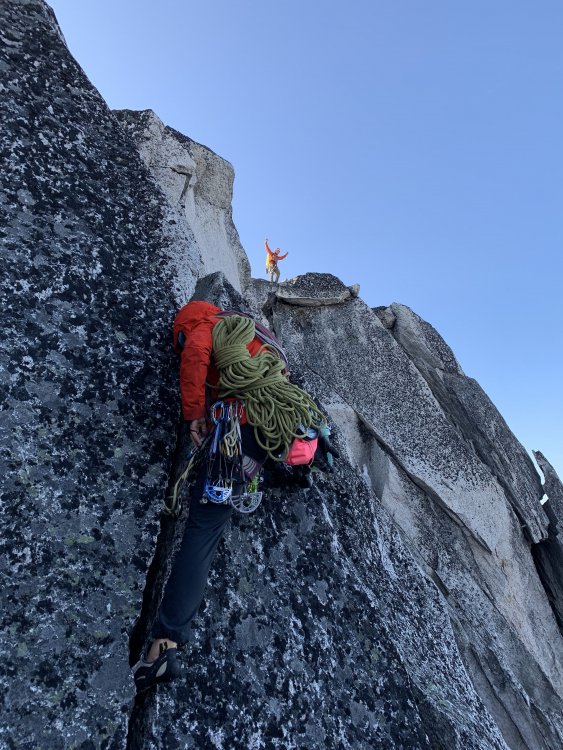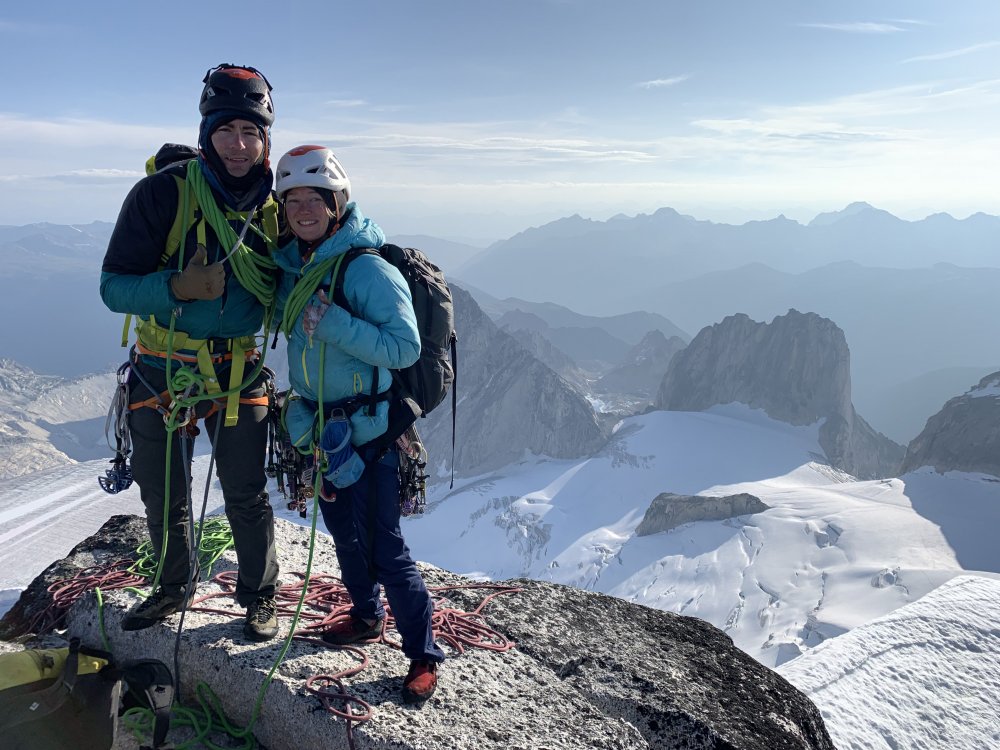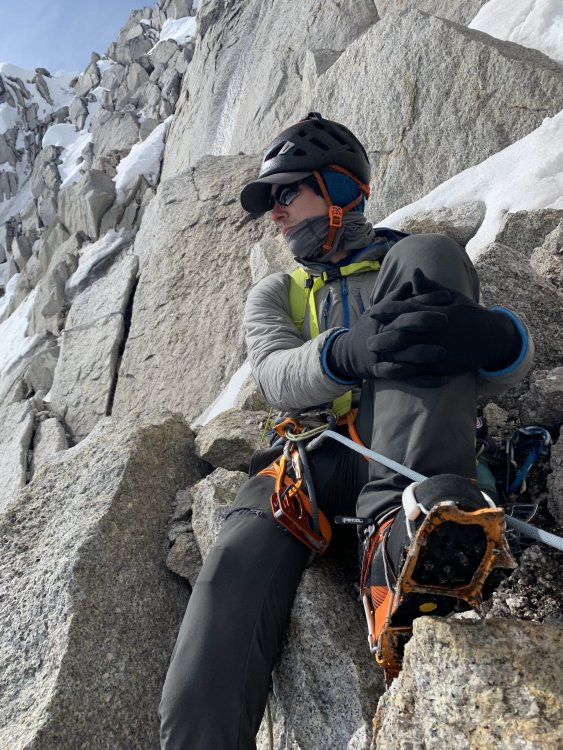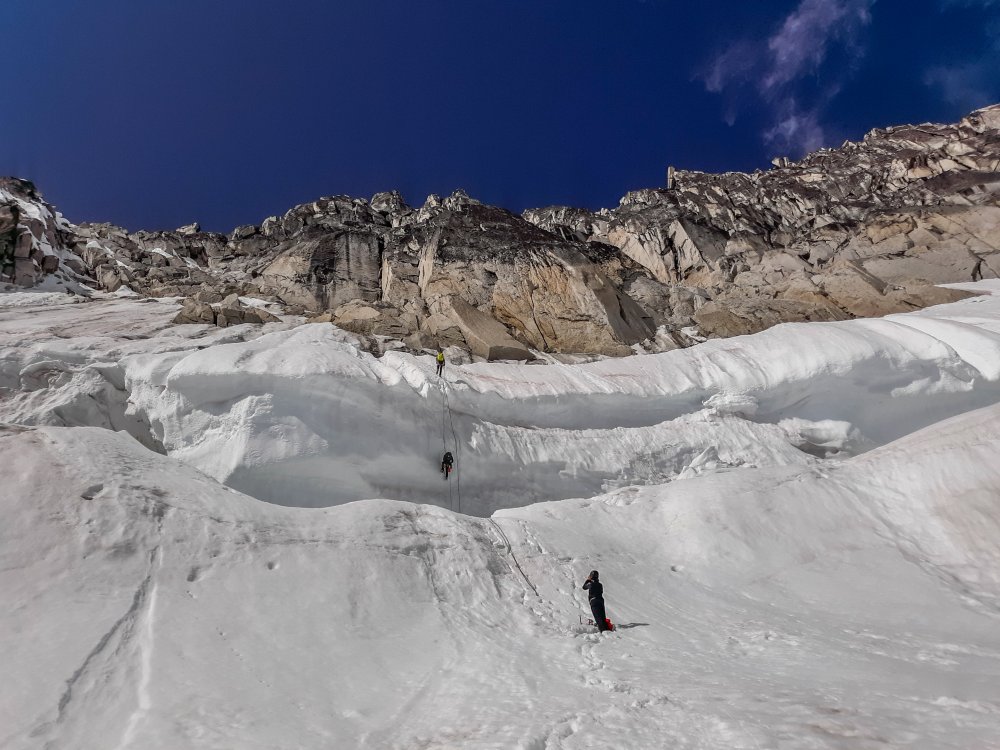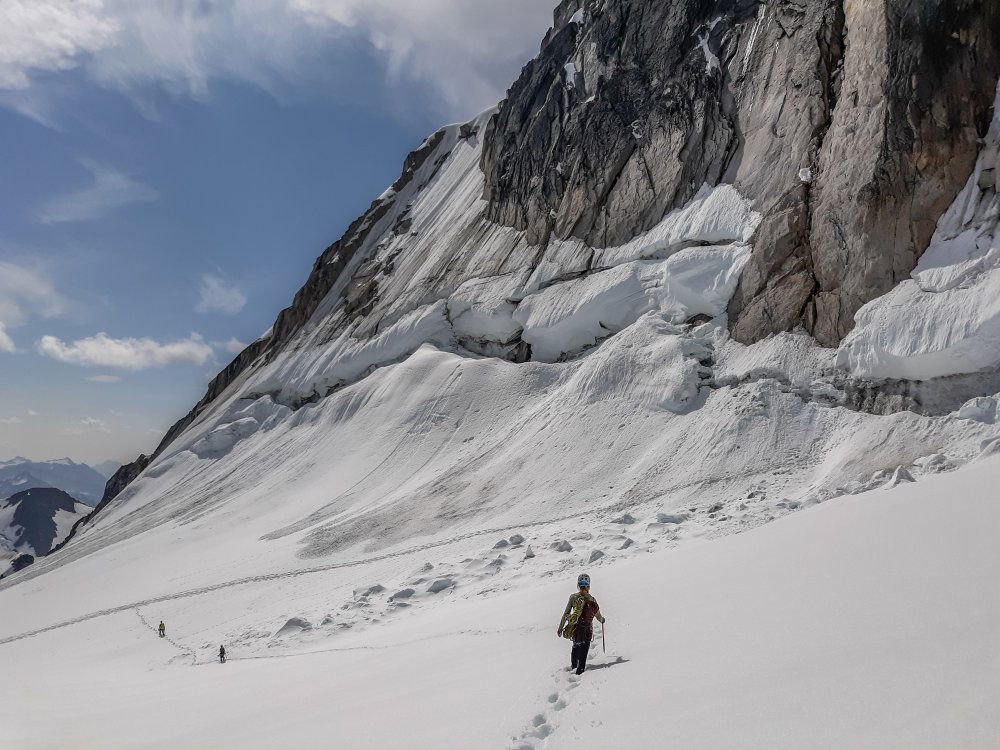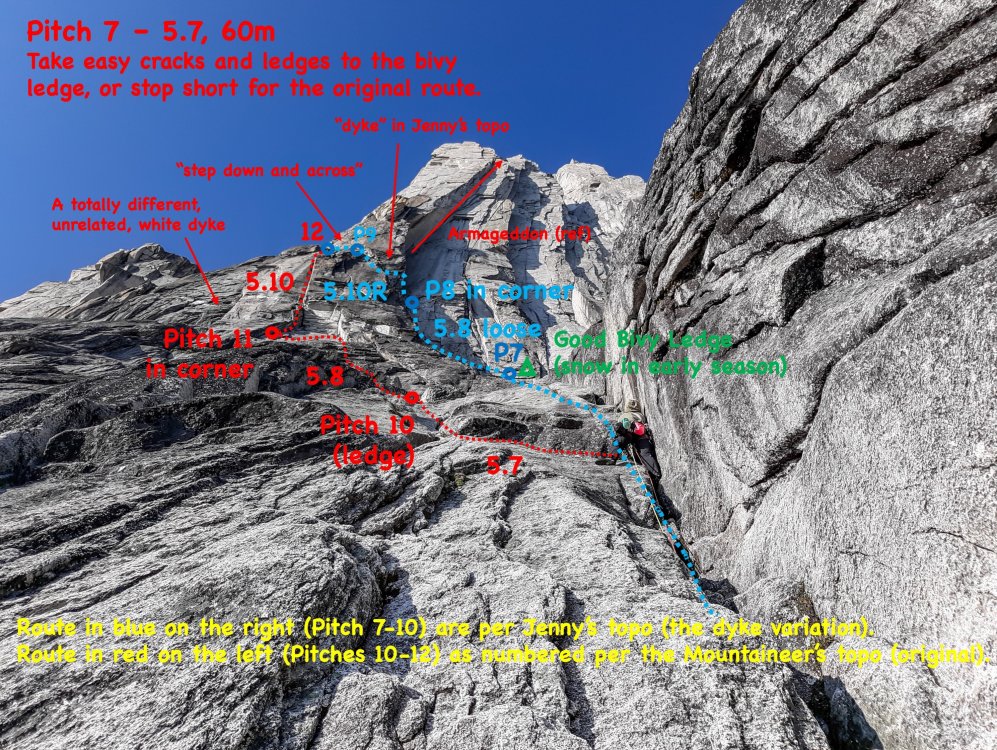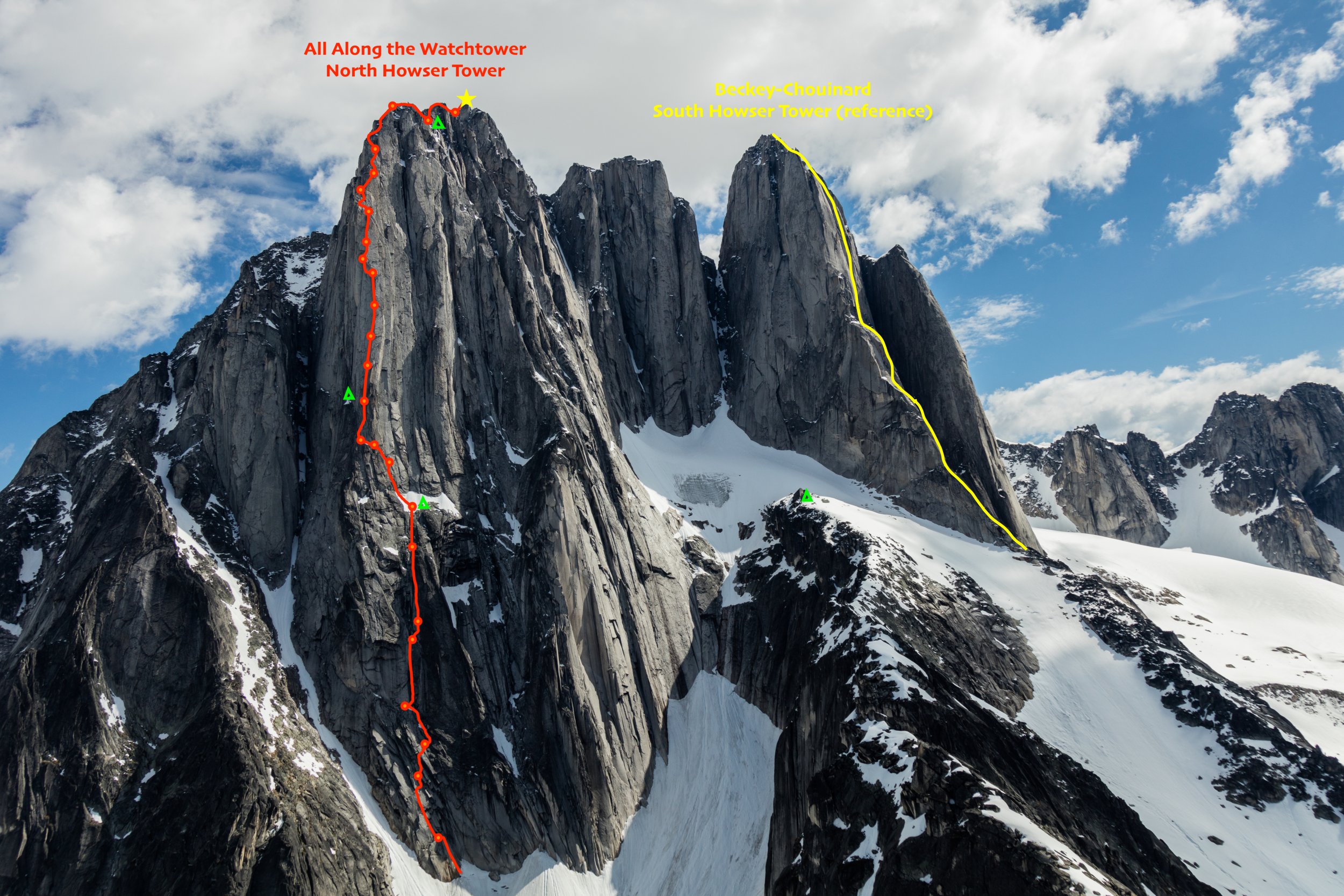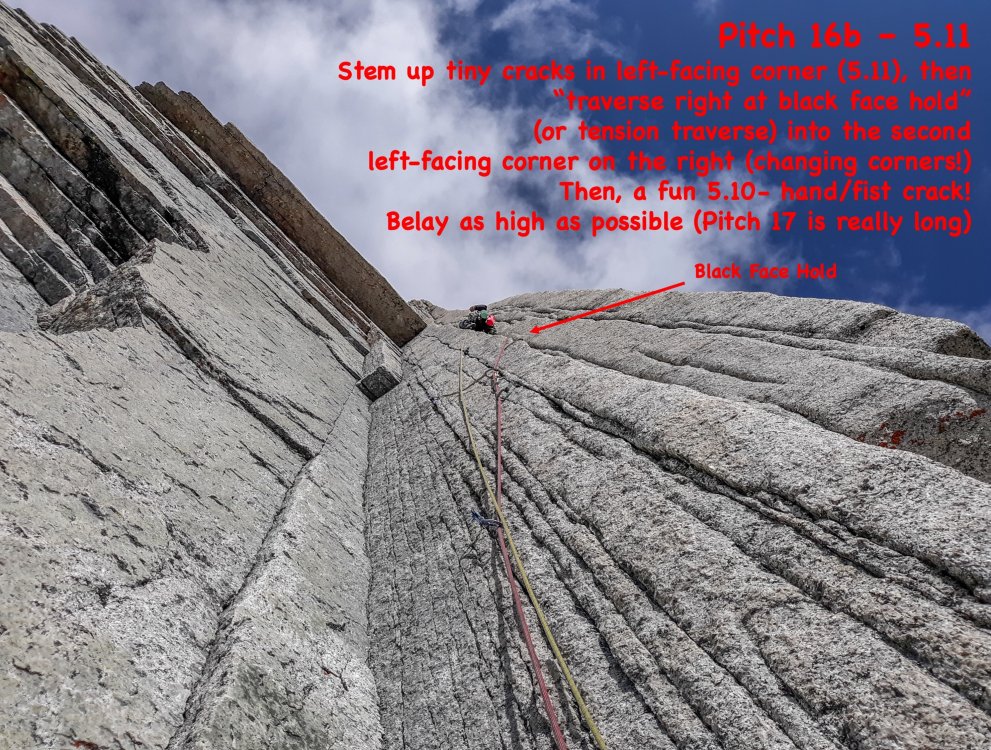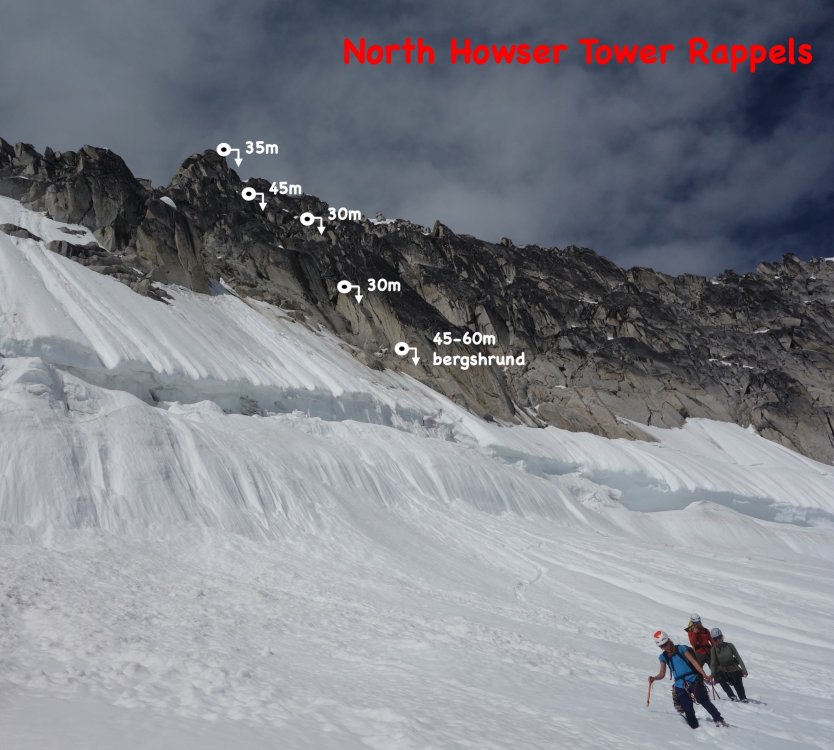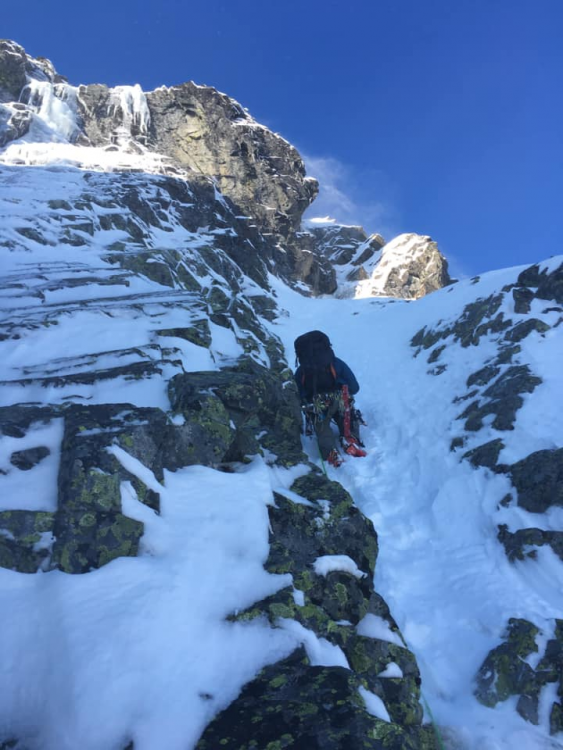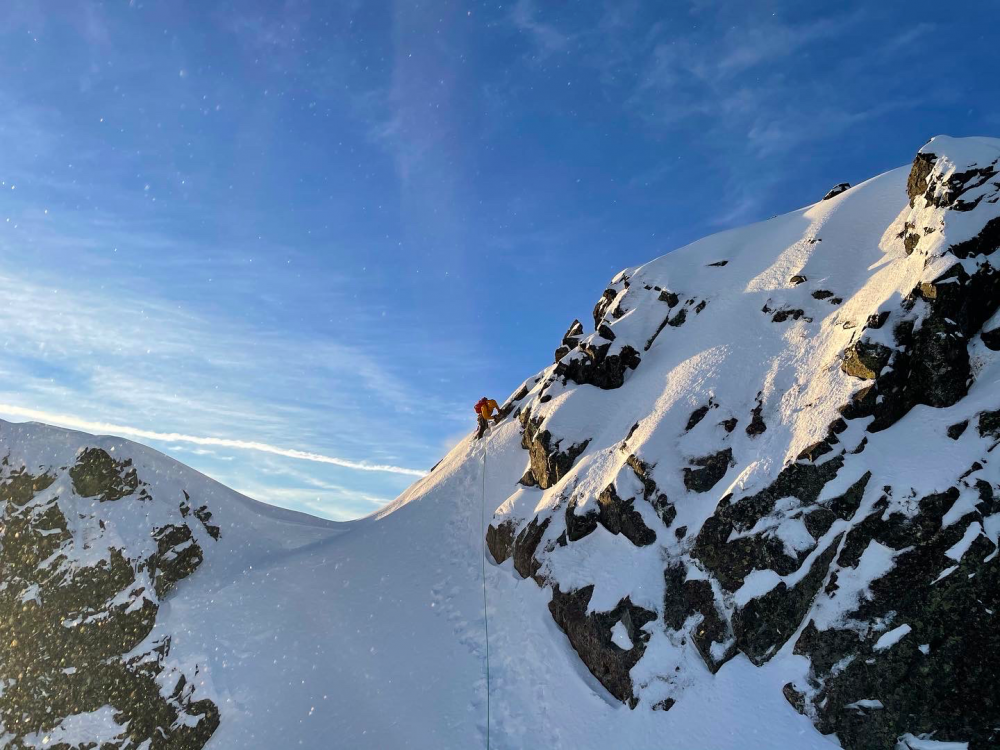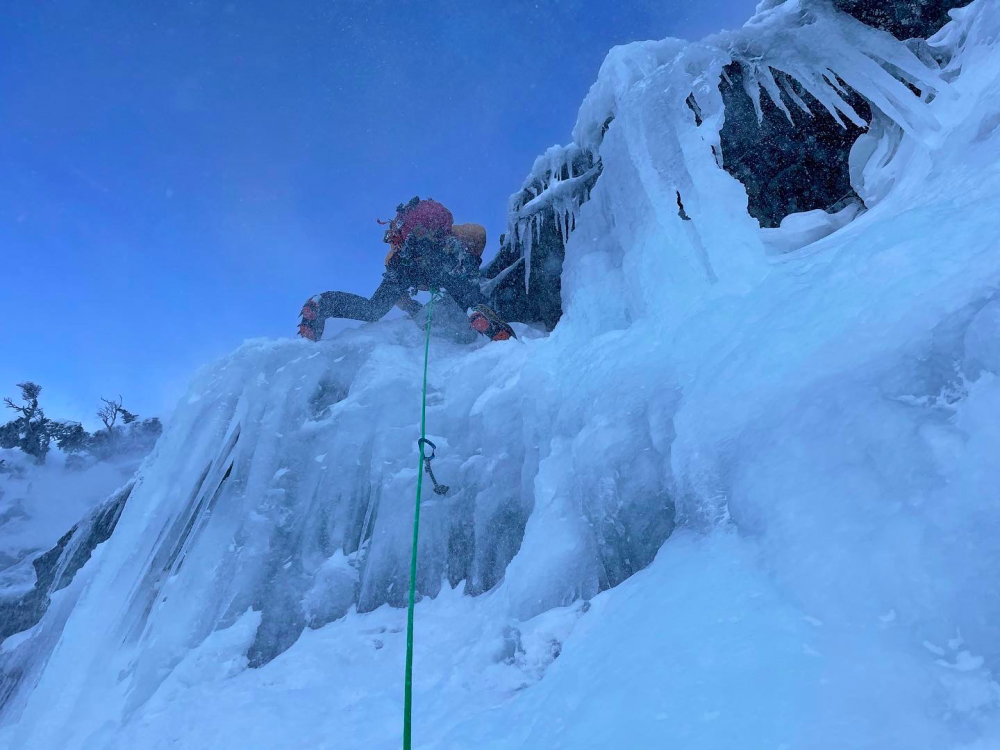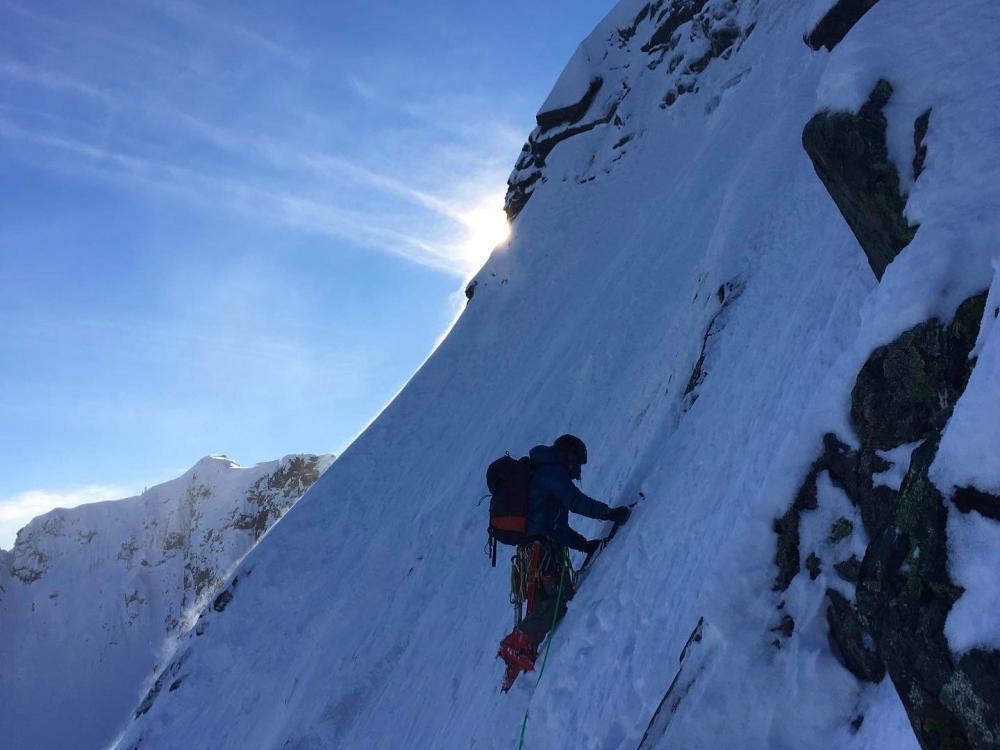Leaderboard
Popular Content
Showing content with the highest reputation on 12/16/20 in all areas
-
Toured around Snoqualmie on Saturday. Multiple parties gunning for NEB Chair, one party reported a successful climb later. The ice step seemed to be in pretty good condition actually. Source Lake Line, all the other stuff, not in. Made it out to the summit of Wright to scope the surprisingly impressive north summit of north Roosevelt (north^2 roosevelt). This area is often loaded, with 6-7 single pitch lines right next to each other and multipitch potential. Only really one of the single pitches looked good currently, but it's still very early in the season. Maybe someday I'll have the motivation to stop sliding down couloirs and climb some of these guys, but I've been by them a few times now and it's a pretty cool spot.2 points
-
Trip: North Howser Tower - All Along the Watchtower Trip Date: 08/06/2019 Trip Report: Climb Date: August 4-6, 2019. Summit August 6, 2019 Climbers: Jeff and Priti Wright Climb: All Along the Watchtower (Grade VI, 3000ft, 32 pitches, 5.10/C2- or 5.12) Style: Follower jugged every pitch in the Dihedral with micro traxions and runners. Heavy French/Aid utilized by the leader in the Dihedral. Two packs brought. Leader climbed with light pack, except in the Dihedral (where follower jugged with one pack on, trailing the other). Two bivouacs (one at base of Dihedral and one on the Summit ridge). With so little beta out there on the route, we found the route finding tricky. This post is intended to be a beta sheet to help with route finding. All Pitch numbers are per Jenny Abegg's topo which was very useful (https://jennyabegg.com/climbing/trip-reportsbeta/all-along-the-watchtower-north-howser-tower/). Pitches 2 and 3 were confusing and we split each of these into two pitches. If you stay on route and watch rope drag, you can avoid splitting these up. They are both full-length pitches. Pitch 3 is so wander-y that rope-drag might be unavoidable - recommend splitting this into two pitches. Pitch 16 (5.12 crux roof) in the Dihedral was only pitch where we thought it was mandatory to disobey Jenny and split into two pitches. Topos Jenny's topo was pretty spot on. Pitches 8-11 on Jenny's topo are the dyke variation that Westman/Haley did (on accident) which ascends directly up from the bivy ledge. Jenny's topo does not show the original route option, which splits off 30m below the bivy ledge. If you wanted to get snow at the bivy ledge and continue on to the original route, you have to rappel or down climb 30m 5.7 to meet back up with the original route. The party behind us did the dyke route and we did the original route. After talking to the party who did the dyke route, it's very safe to say that the dyke is better way to go. The Mountaineer's guidebook (the green book) topo shows both the original route and also the dyke route options, but the High Col topo shows only the original route. The High Col topo is not accurate at all, so be careful. Keep a copy of Jenny's and the Mountaineer's topo on you. Bivy sites: -We didn't see any good bivy sites until atop Pitch 7 (flat, walled, snow in early season). Some descriptions said there was one atop Pitch 3, but it's more of a sitting bivy. -Another good bivy site is out-of-the-way, about 20m left of the base of the Dihedral (flat, walled, no snow). Some descriptions said this was 4-person, but it fit the two of us pretty snug. To get from here back to the base of the dihedral, you have to down-climb 10m (5.7) then ascend 10m (5.7) to the base of the Dihedral. -Some bivy options along the ridge (four of us stayed at one, very snugly, about halfway on the summit ridge above the seventh rifle gully). -A flat, walled bivy spot on the summit (lots of snow throughout the season). When we saw it, it had thick snow/ice on it, so you'd be sleeping on top of snow. Photo Credit above: Tim Banfield Descending down to East Creek from the Pigeon-Howser Col. Left to Right: North, Central, South Howser Towers, Minaret. Priti is just below the Beckey-Chouinard Route From East Creek descend until you can scramble up to the ridge. Stay low on ledges if you want to cross over into the gully ("B" in picture, not recommended, loose scree and hard ice). Recommend staying on the ridge (climber's right side, "A" in picture) as if approaching for Beckey-Chouinard on South Howser Tower. From the base of Beckey-Chouinard, it is easy to scramble down to the snow to traverse high over to the North Howser Bivy Rock. This is a big, obvious boulder just at the next ridgeline. There is a luxurious, sheltered, covered bivy cave here (recommended instead of East Creek if you only have bivy gear and you want to get an early start for the route in a push). Four rappels (two hangers, chains, rap rings) take you to the snow below. The first rappel is heavily cairned and easy to find (even in the dark), requiring a bit of down-scrambling to get to the lip of the ridge. The rappel line is straight down. Each rappel is easy to find and on obvious ledges. You'll want crampons and ice axe for the snow below, on the way to the base of Watchtower. We used a Beal Escaper for the rappels which worked like a charm... we did not bring a pull cord on this trip. Note: rappels shown in picture above are approximate (just use cairns to find the first one, then take the plumb line). The picture is not intended to help you find the rappels. The first rappel. Crossing the moat. Another party of rappelers above. The approach snow after the approach rappels. You're committed now! Looking up North Howser Tower. Approach at the base all the way left to big ledges just before the large, obvious gully. Take ledges all the way left to dihedrals. Pitch 4 (above), 5.10, full 60m: a striking dihedral (protect on the face on the right) which starts as an easy stem/chimney and ends in an overhanging, difficult off width. Photo credit: Dane Steadman Bivy site along ridge. Looking down the ridge from the summit. Photo credit: Dane Steadman "Hand crack on the right side of crest". Party on the summit. Photo credit: Dane Steadman Simul Rappelling over the bergshrund. Photo credit: Dane Steadman Joining up with the Beckey-Chouinard steps. Photo credit: Dane Steadman Gear Notes: Double Rack to #3. Single #4. Triples in finger sizes for dihedral. Offset nuts, brassies. Did not bring offset cams (did not think they were necessary). No aid gear. 1 sleeping bag to share. 1 bivy sac to share. 1 Jetboil. Beal Escaper for rappels. We did not bring a pull cord. Recommend a pull cord to 1:1 haul packs in the Dihedral. Approach Notes: Started from Kain Hut, ended at car.1 point
-
My partner and I climbed the NE Buttress of Chair Peak on December 12th. The route was in really climbable condition, with some enjoyable mixed climbing in the S-couloir. The route was mostly snow climbing, but the ice step was in good shape at around WI2+ (steep but short). We pitched out the entire route which made upward progress on the slower side, and we reached the summit around 4pm, which was later than we intended. A strong northerly wind caused for blustery conditions with significant amounts of spindrift. We accidentally descended down the wrong gully from the summit. The route description we followed said to descend the obvious gully for 200 feet until you turn left at a notch to find a rappel anchor. We descended the gully for about 400 feet looking for the left turn and notch before realizing we were in the wrong gully. We located some rap tat and were able to cut into the correct notch from below with a rappel, some up-climbing, and then some down climbing. Because we had to rap sideways, the rope was pulled over a rock band and got stuck. I had to solo up to free it. At this point, dusk had fallen and the rest of the descent was done in the dark. From the notch, we located the chains (nice looking bolts) on skier's right. I rapped 200 feet, passing 3 intermediate anchors. There was no rap tat or rappel station at the 200 foot mark, so we decided that my partner would rap to the 3rd rappel station, a single bolt with a rap ring at about 150 feet down, and set up the last rappel for us. I was unroped, standing on a ledge in the corner of the gully. My partner rapped, and while pulling the rope to set up the last rappel, the rope got stuck and he had to climb up the couloir for a significant distance to free the rope. We could have down climbed from there, but I was worried about the avy danger and wanted to rap as far out of the couloir as possible. We did the last rappel and realized that the strong winds from throughout the day had created wind-loaded slopes in the bottom of the descent couloir. Despite the avalanche hazard being forecasted as "moderate" for that day, the hazard had certainly moved into the 'considerable' or even 'high' range. I pulled the rope and began to coil it while my partner started down climbing the rest of the gully, looking to remove himself from the loaded slope as quickly as possible. While I was coiling the rope, my partner triggered a windslab about 10 feet below me. I heard him yell out "avalanche!" and could make out debris pouring down the slope. The slab was 40 feet wide and 8" deep. He slid for about 30 feet but was able to self arrest by swinging his ice tool into the hard snow beneath the slide/debris. I watched the debris pour over him and shoot down the rest of the slope. I carefully stepped below the crown to avoid triggering any more loaded snow, and made my way down to my partner. He was thankfully uninjured, but both of us were shaken from the close call, and exhausted from the arduous day. We continued down safely the rest of the way, and were extremely cautious of travelling on wind-loaded slopes until we reached Source Lake. While this route is fun and in good condition, it should not be taken lightly, as the objective dangers are serious. While it is satisfying to complete a route, it is better to do so in good style. Avy gear should be considered mandatory on the approach, descent, and on route. Consider another objective if heavy wind loading is present. This was definitely a learning experience as I am relatively new to winter alpine climbing. I'm sharing this information both to acknowledge the mistakes we made, and to give a heads up to other parties interested in this popular route. Our rack: Avy gear, two pickets, a large set of nuts, singles of cams from .3-1, a few KB's, a short LA, a small angle, and 6 screws from 10-17cm. We used all the gear except most of the nuts and two screws. Here are a few photos from the route:1 point


